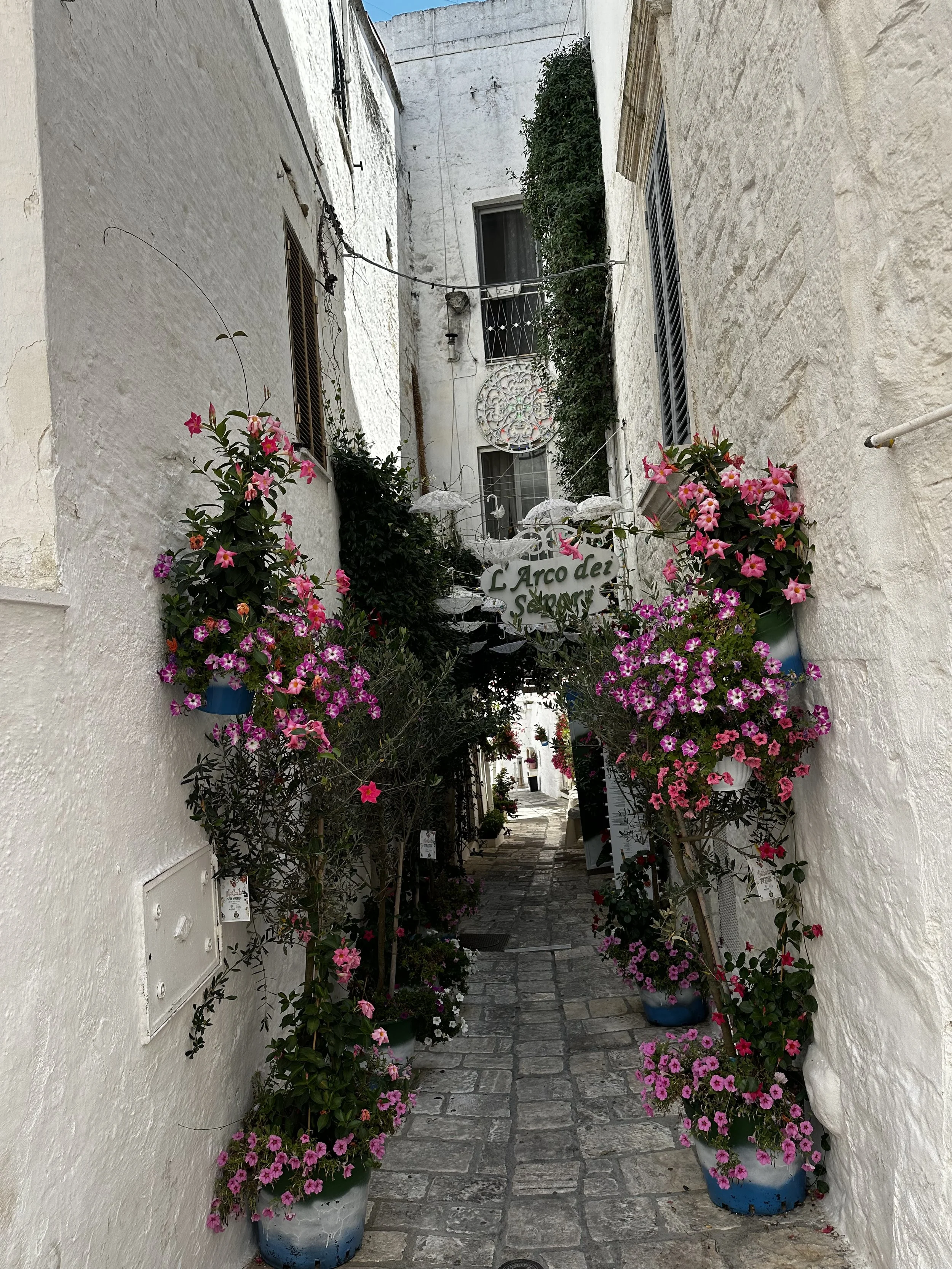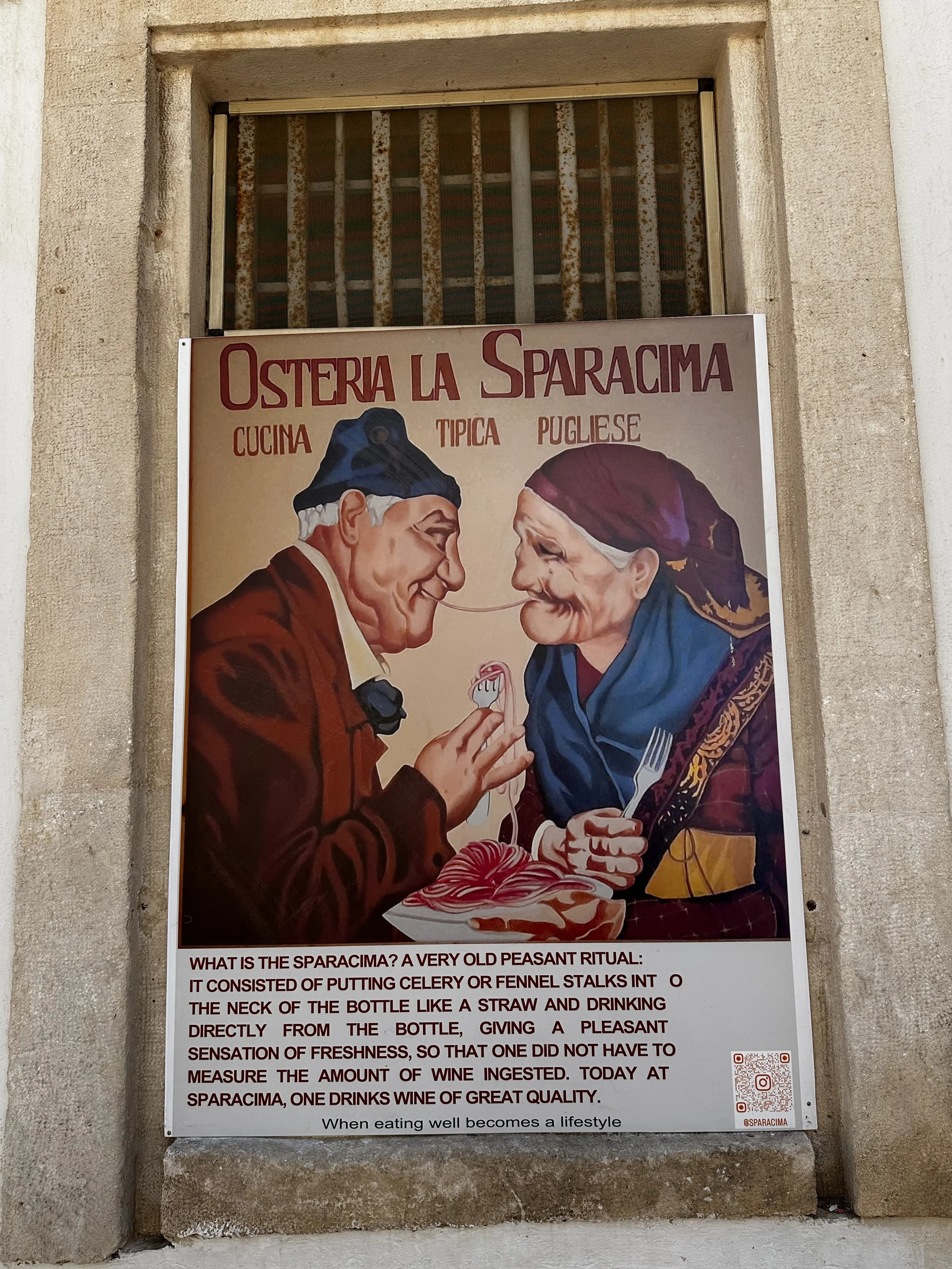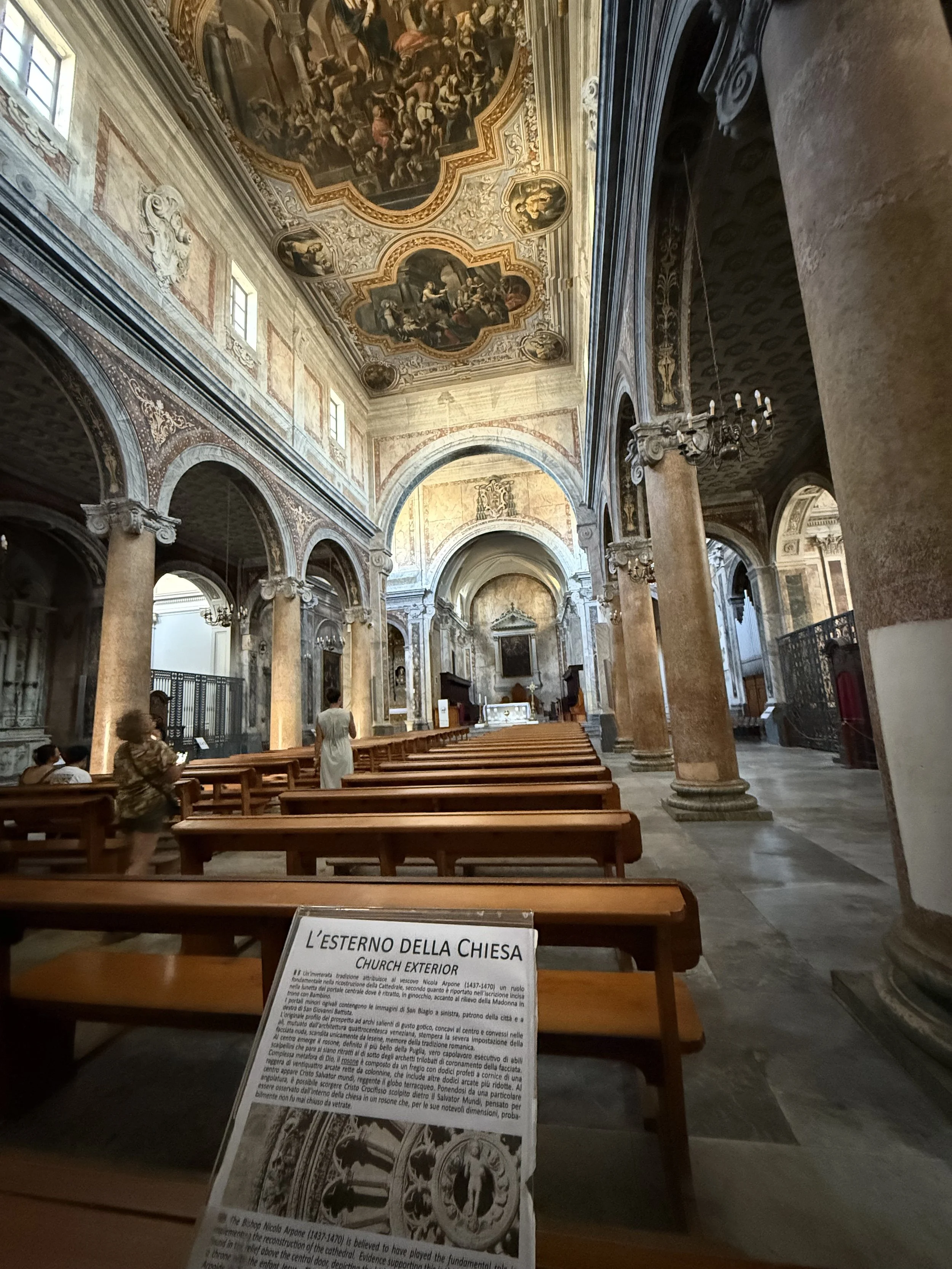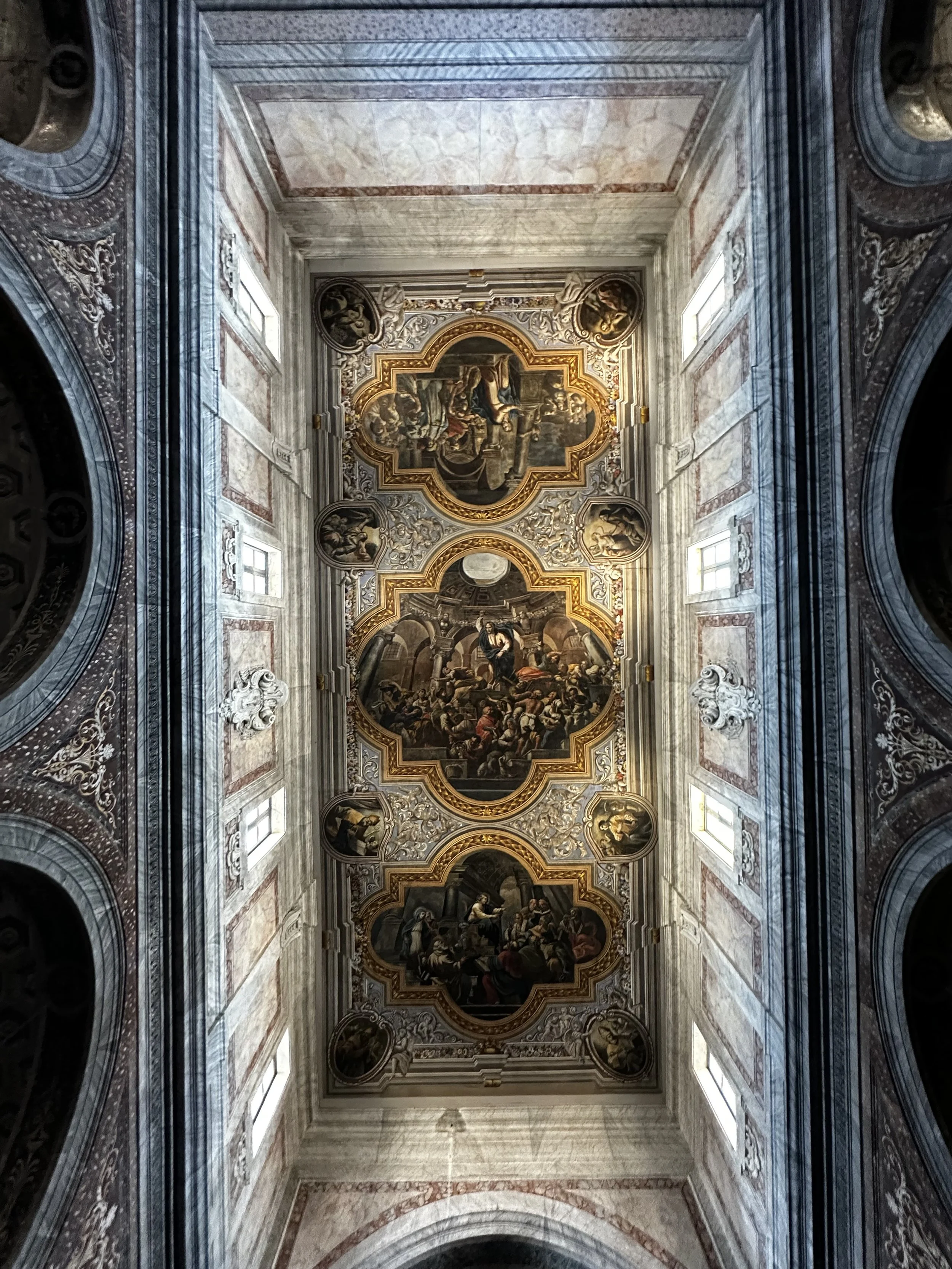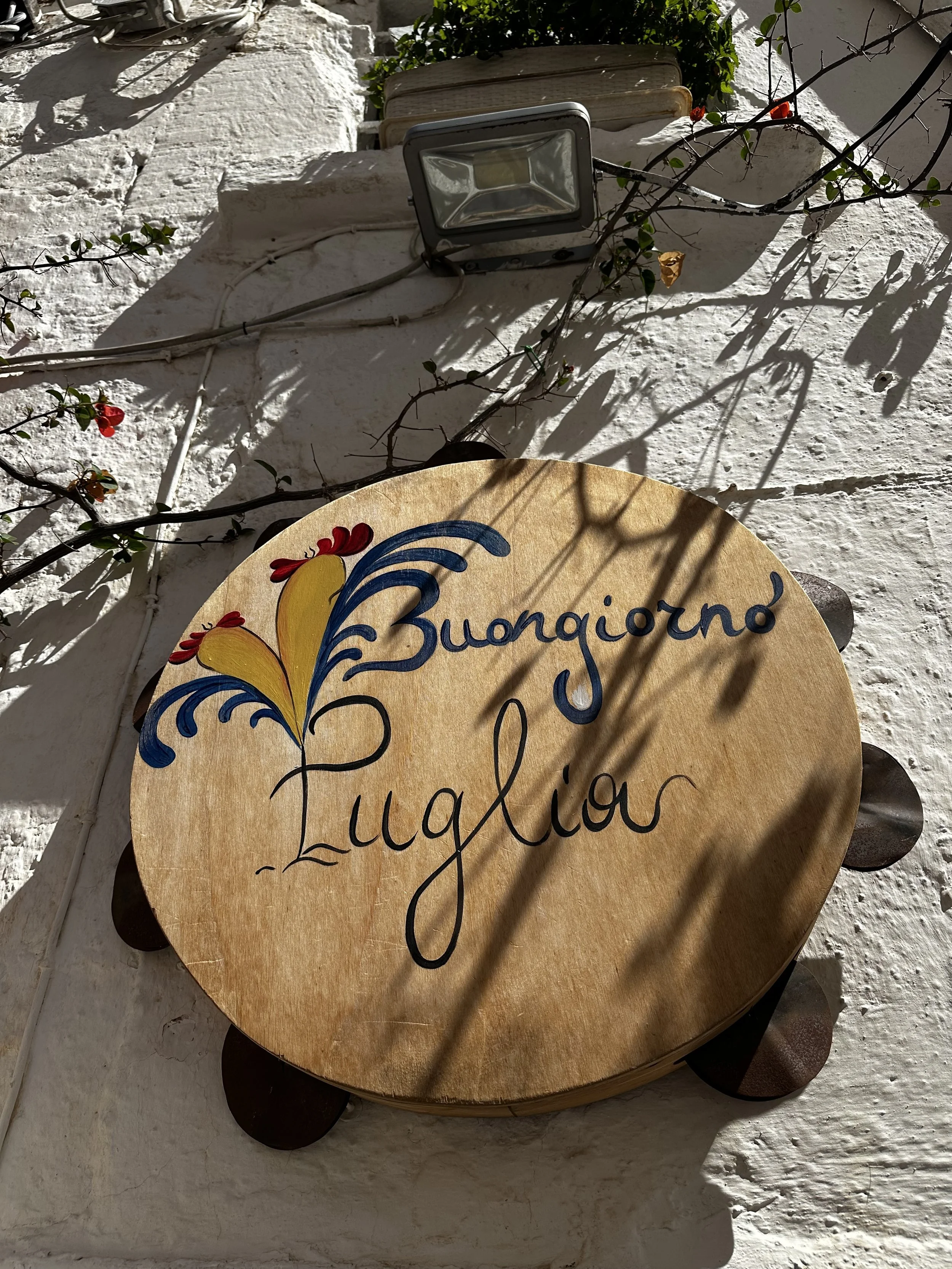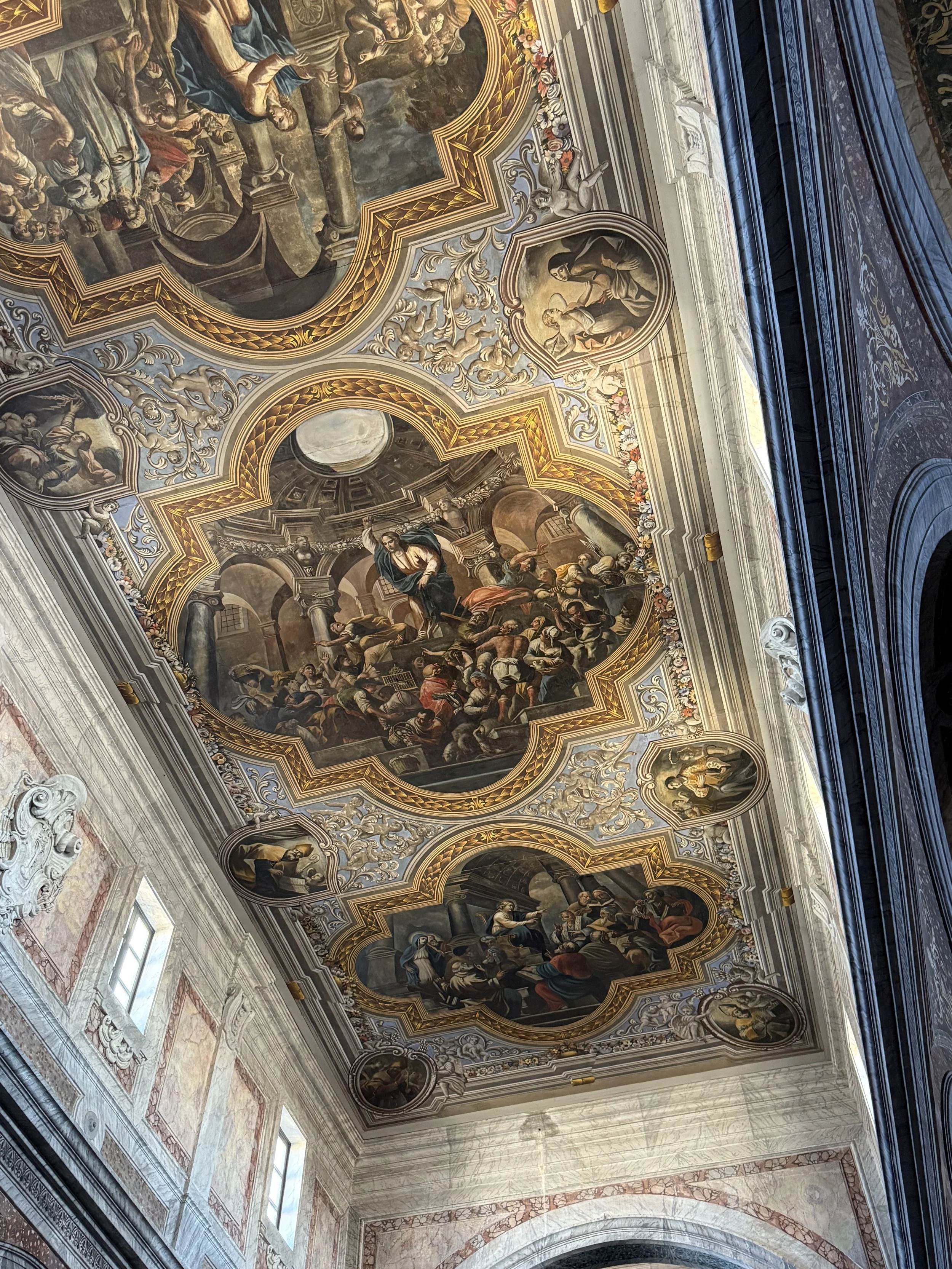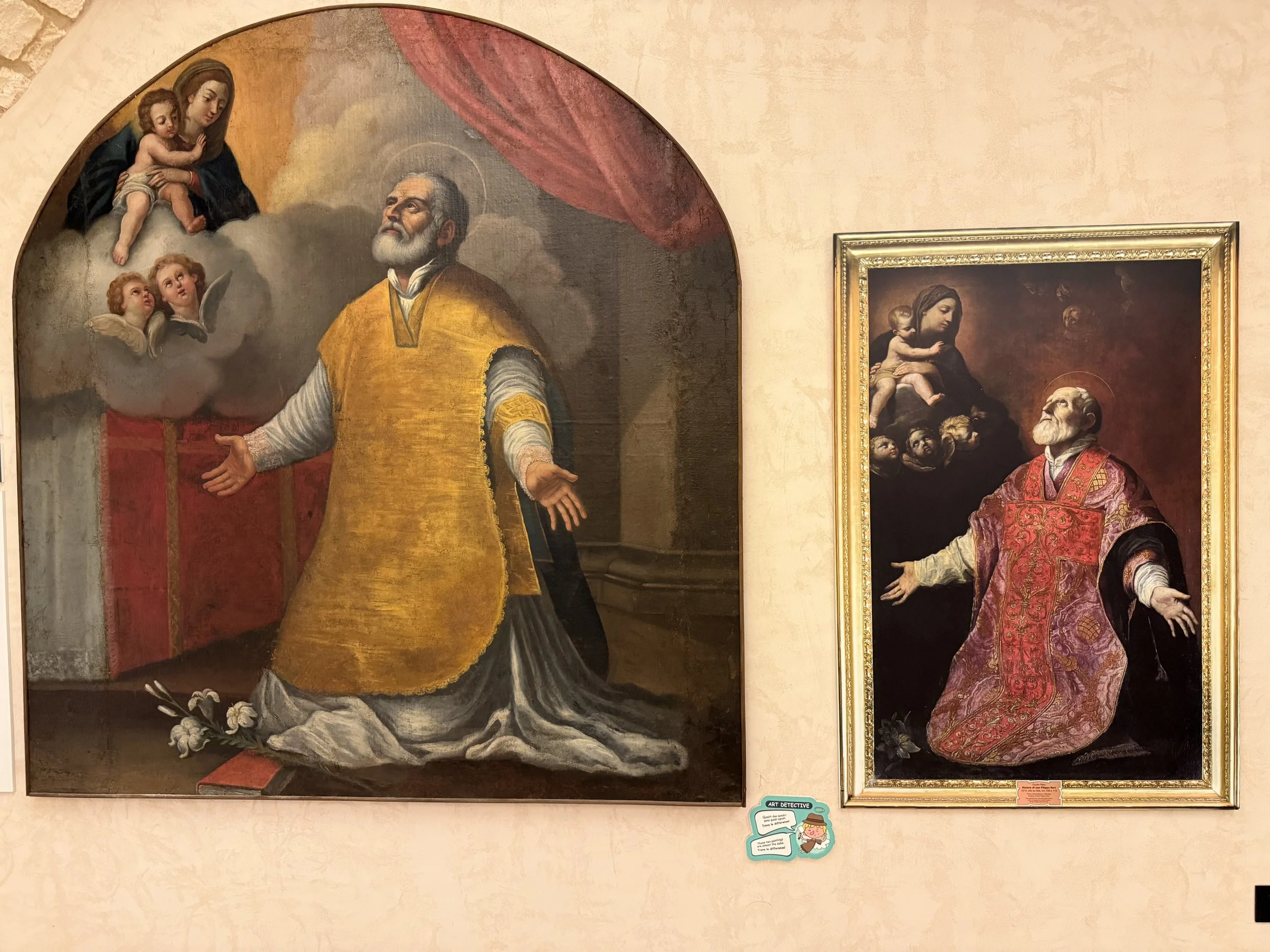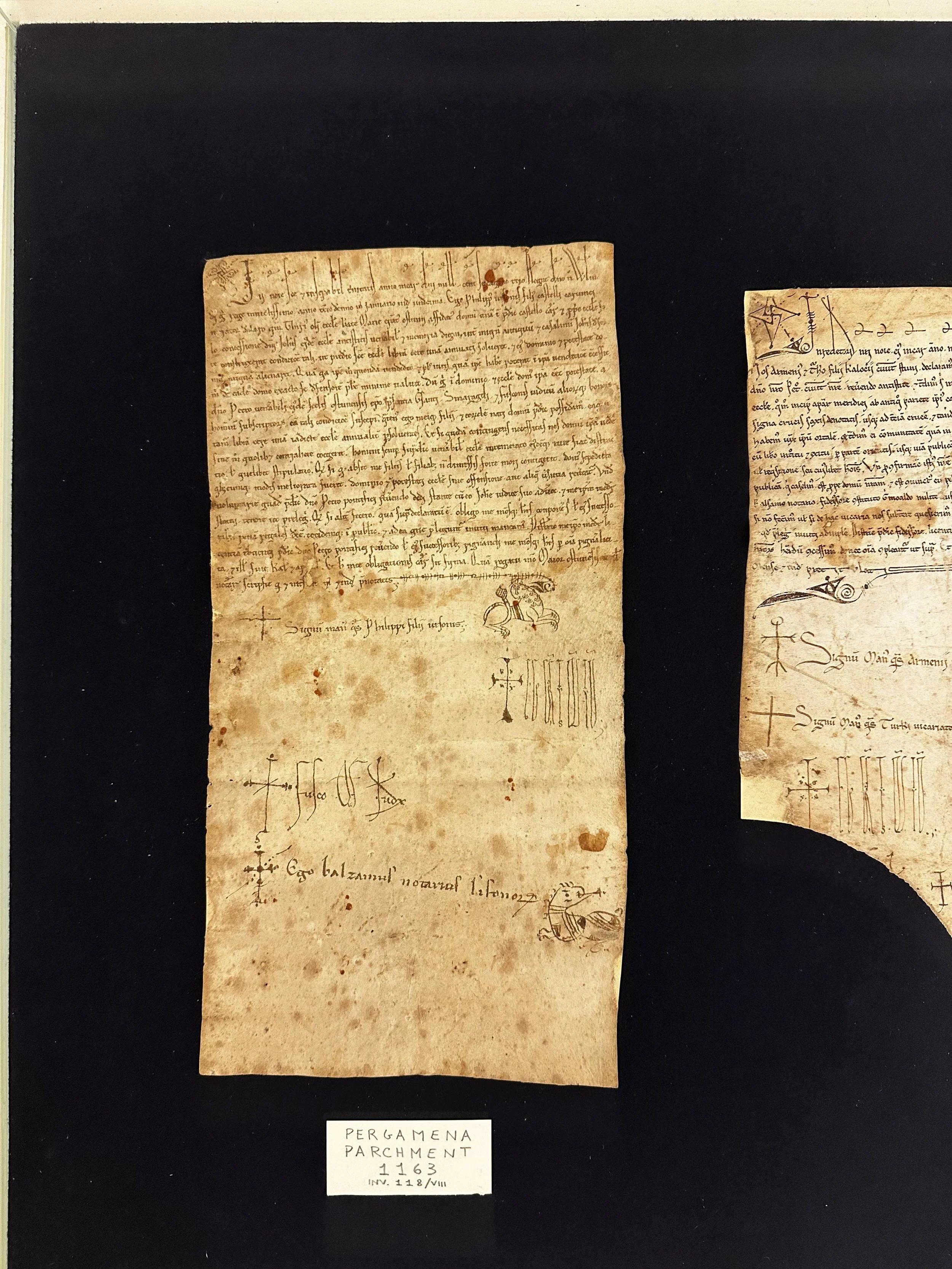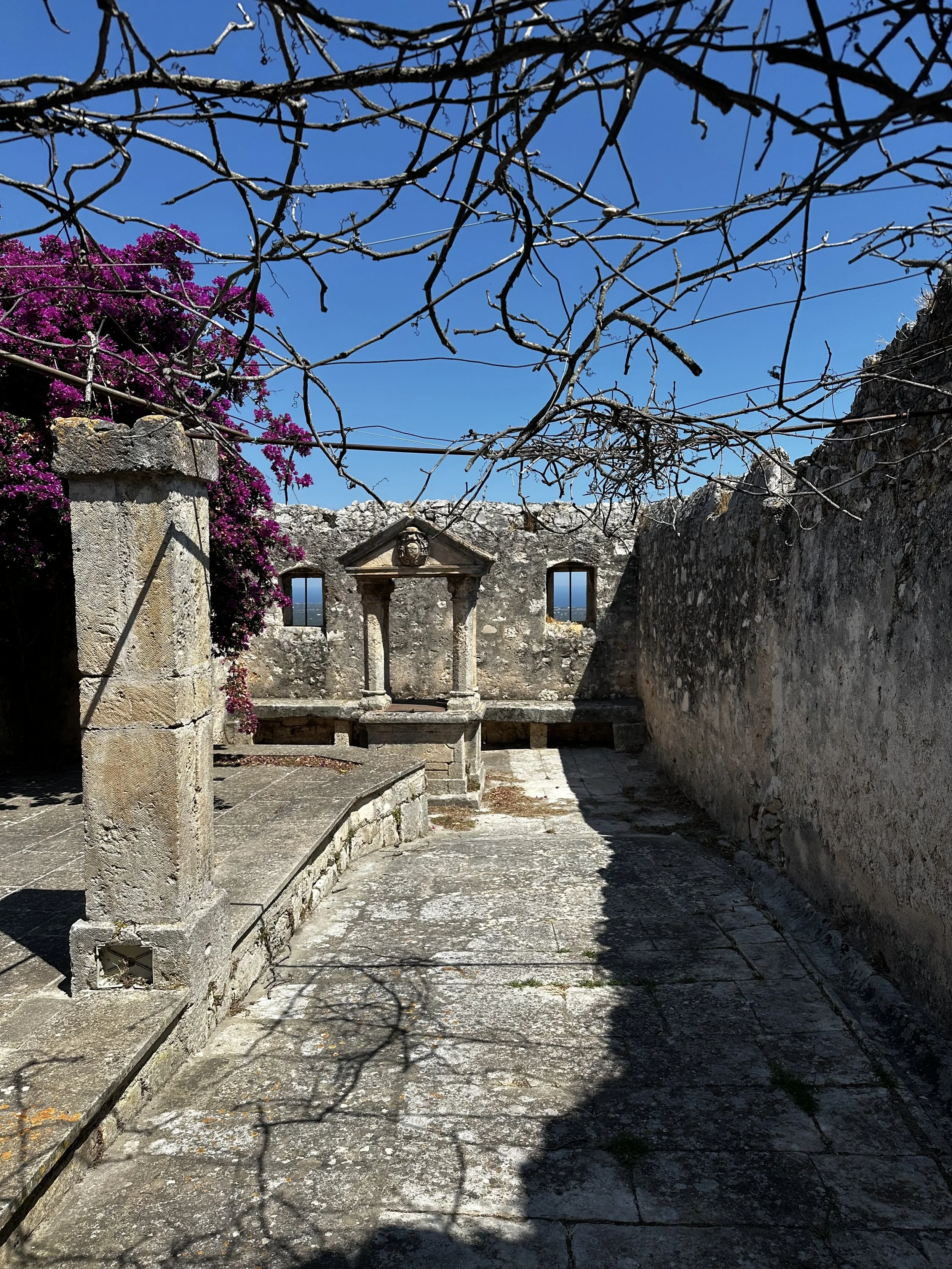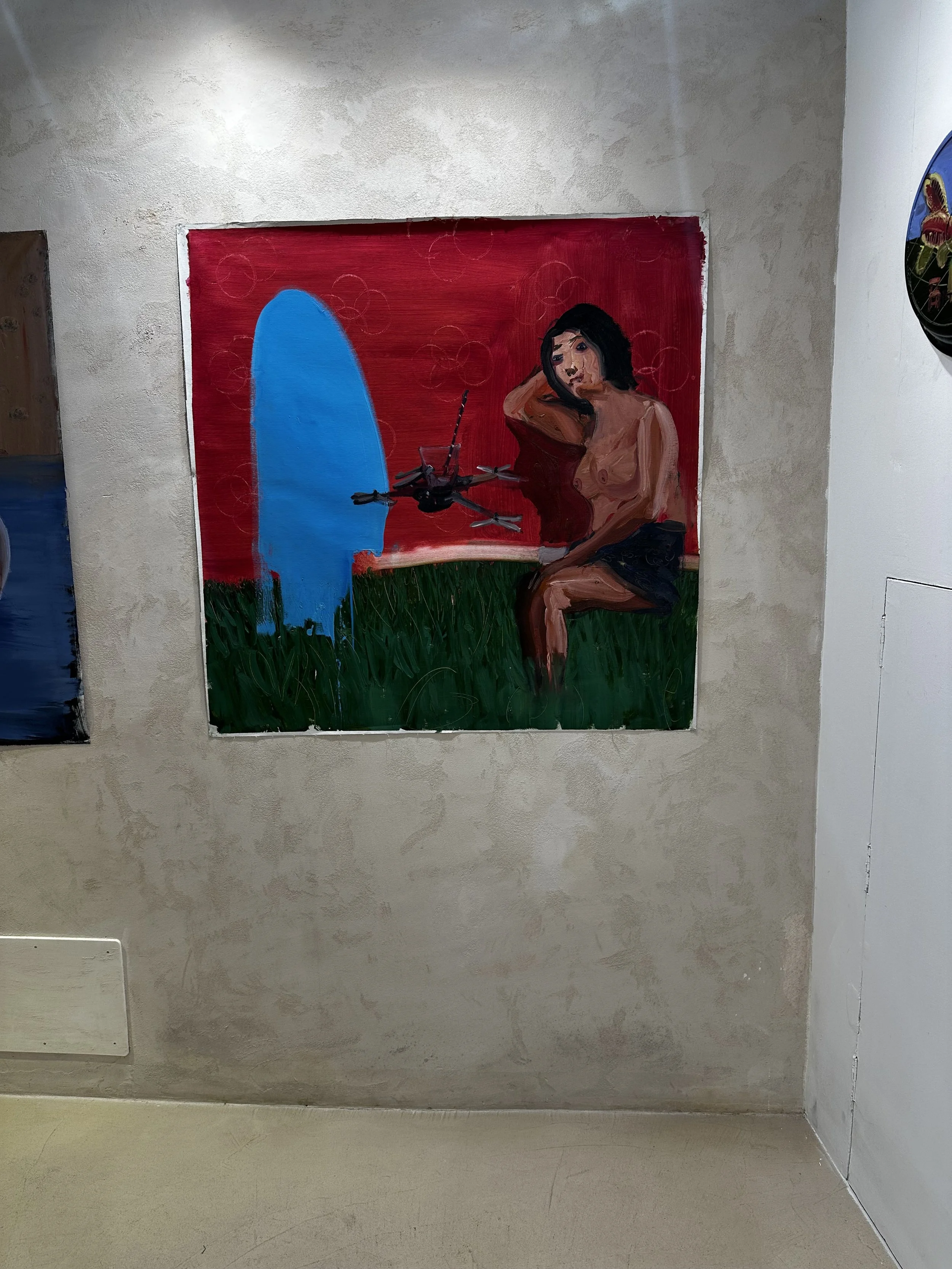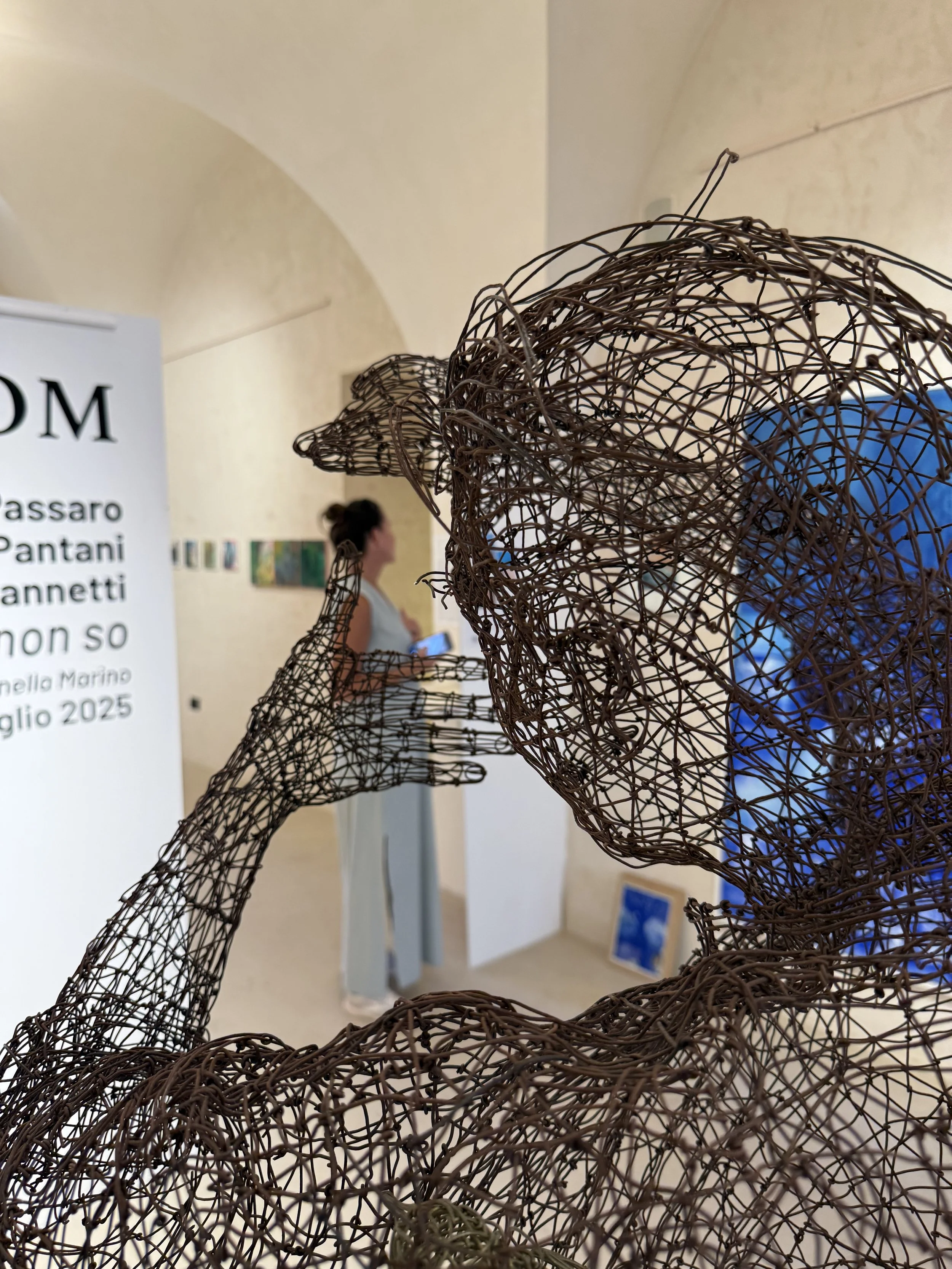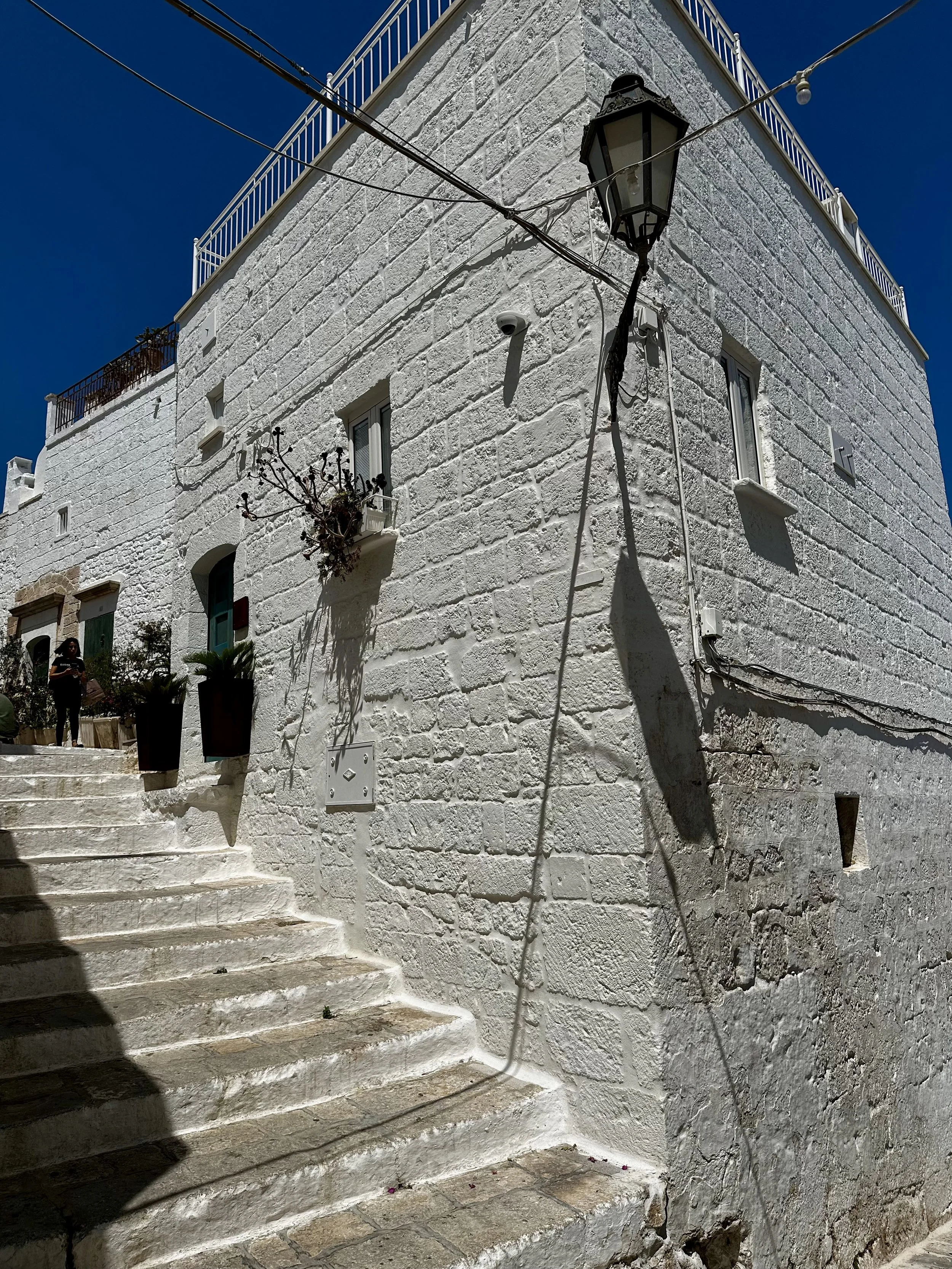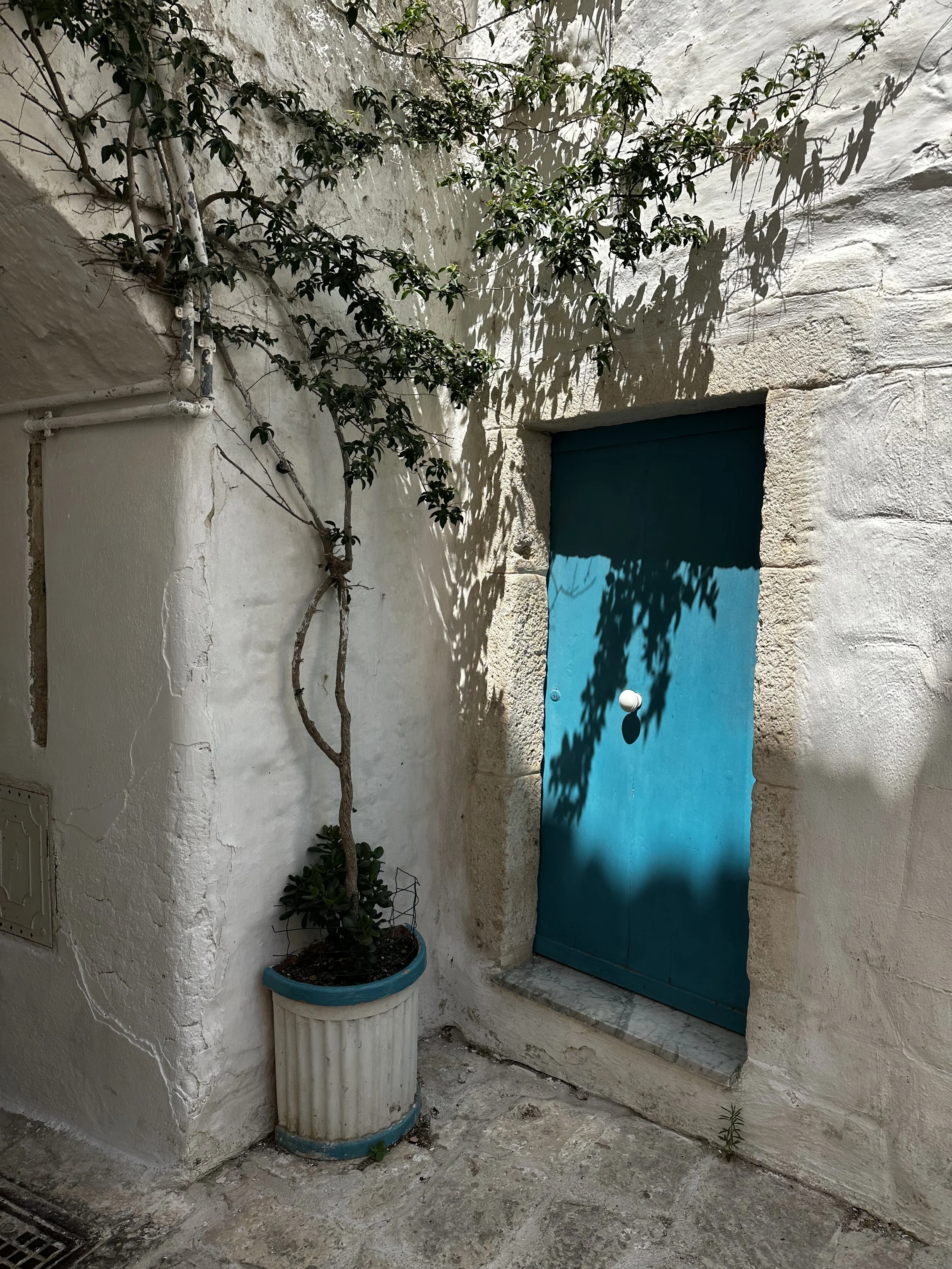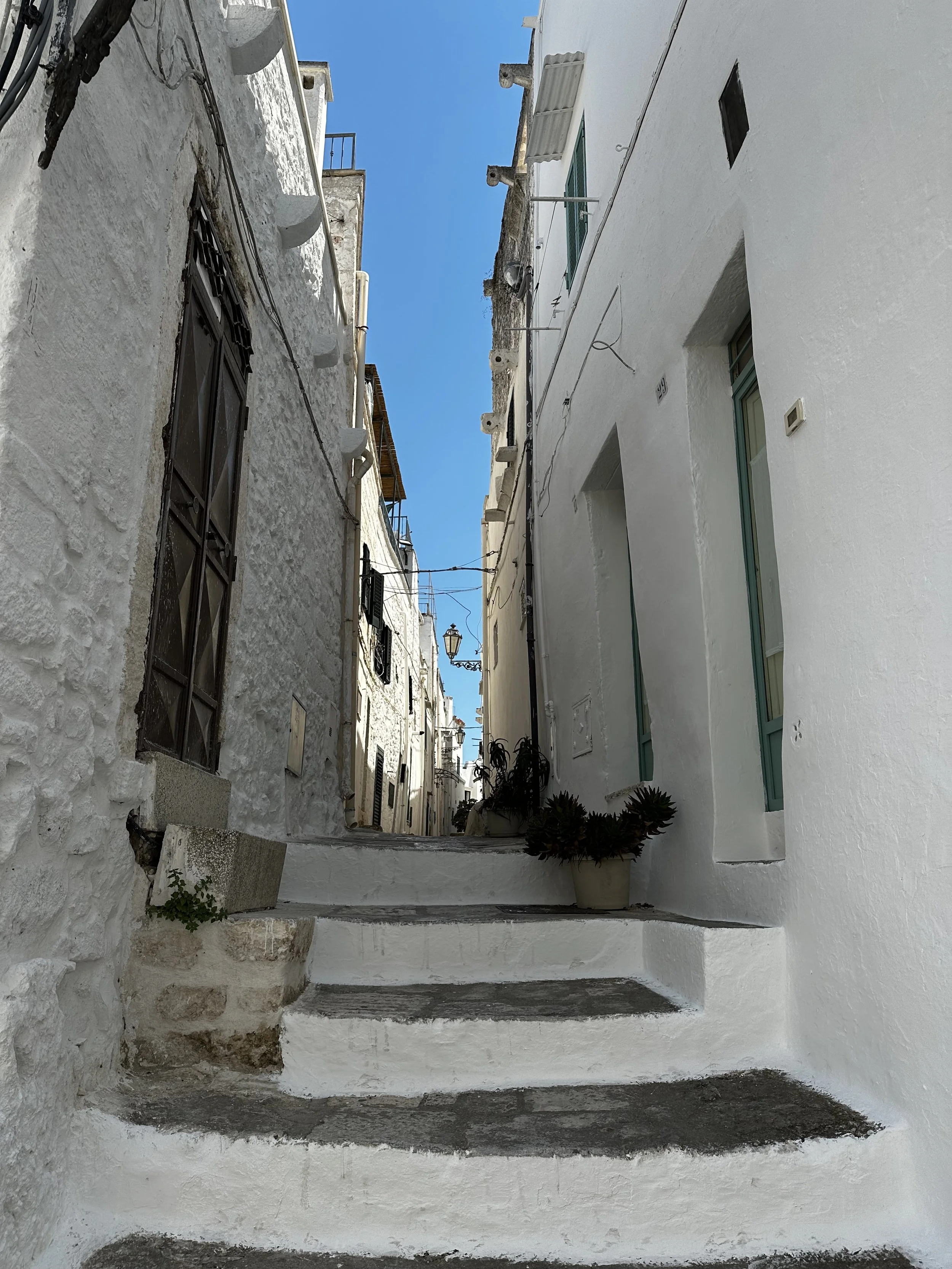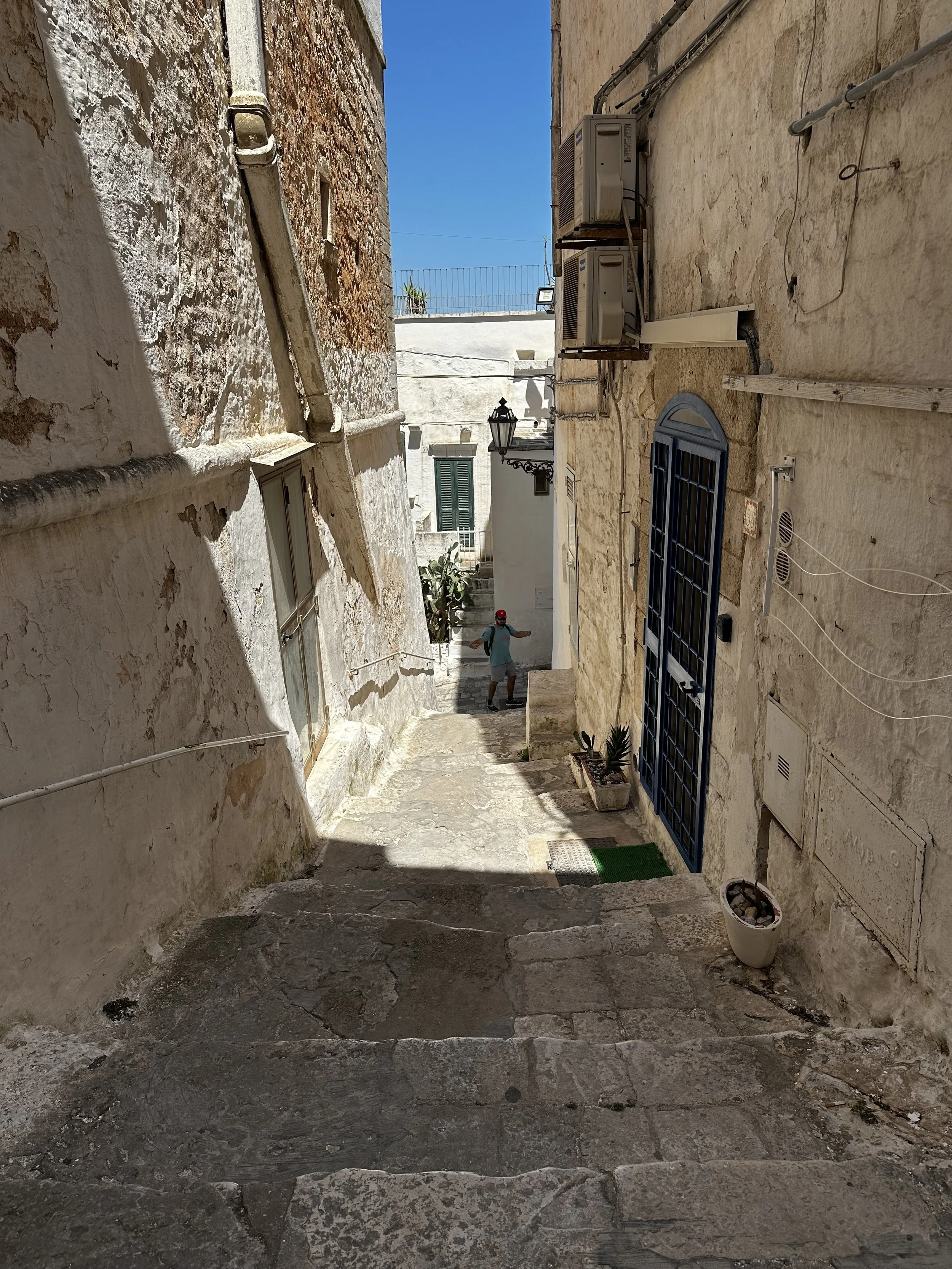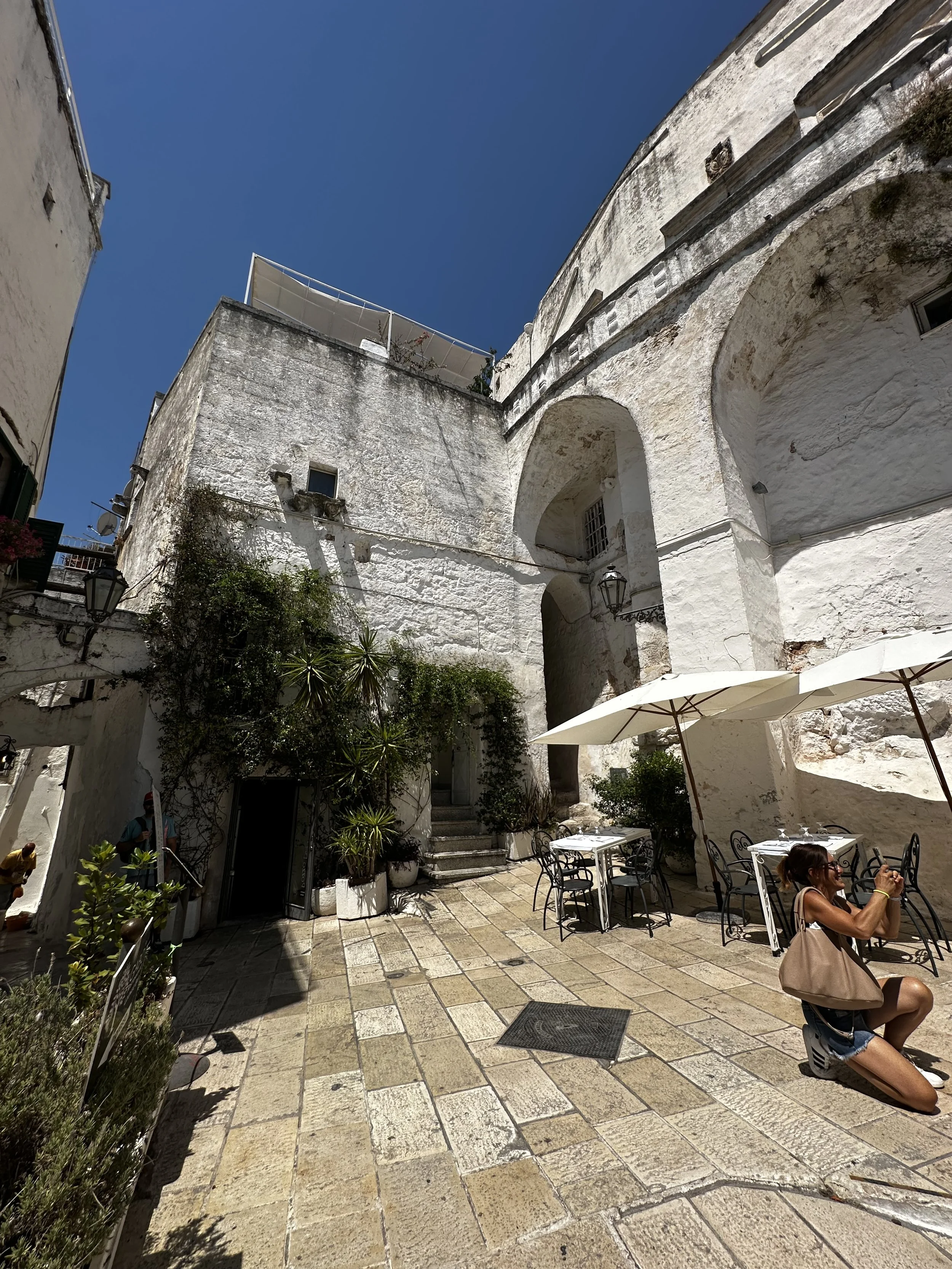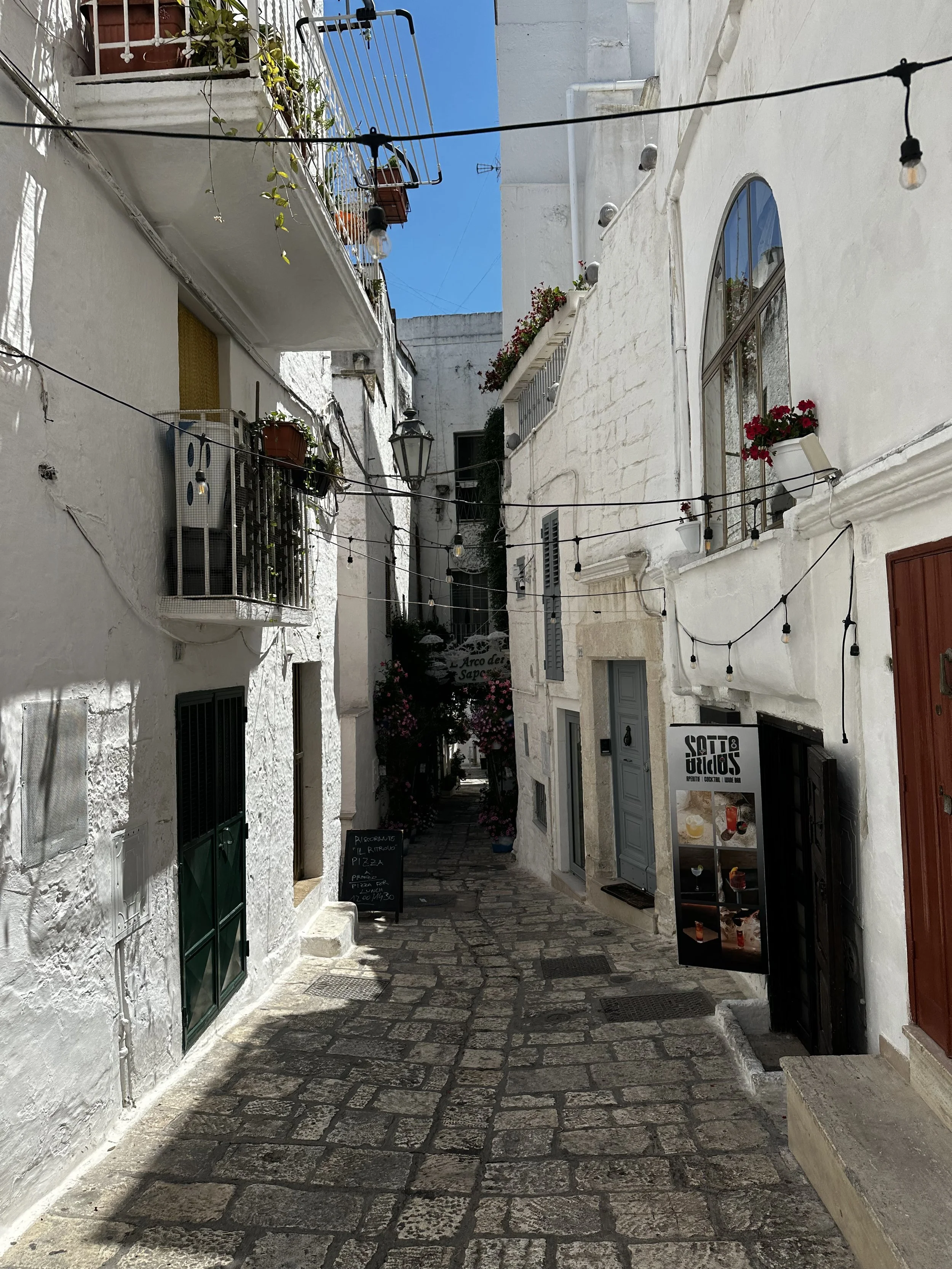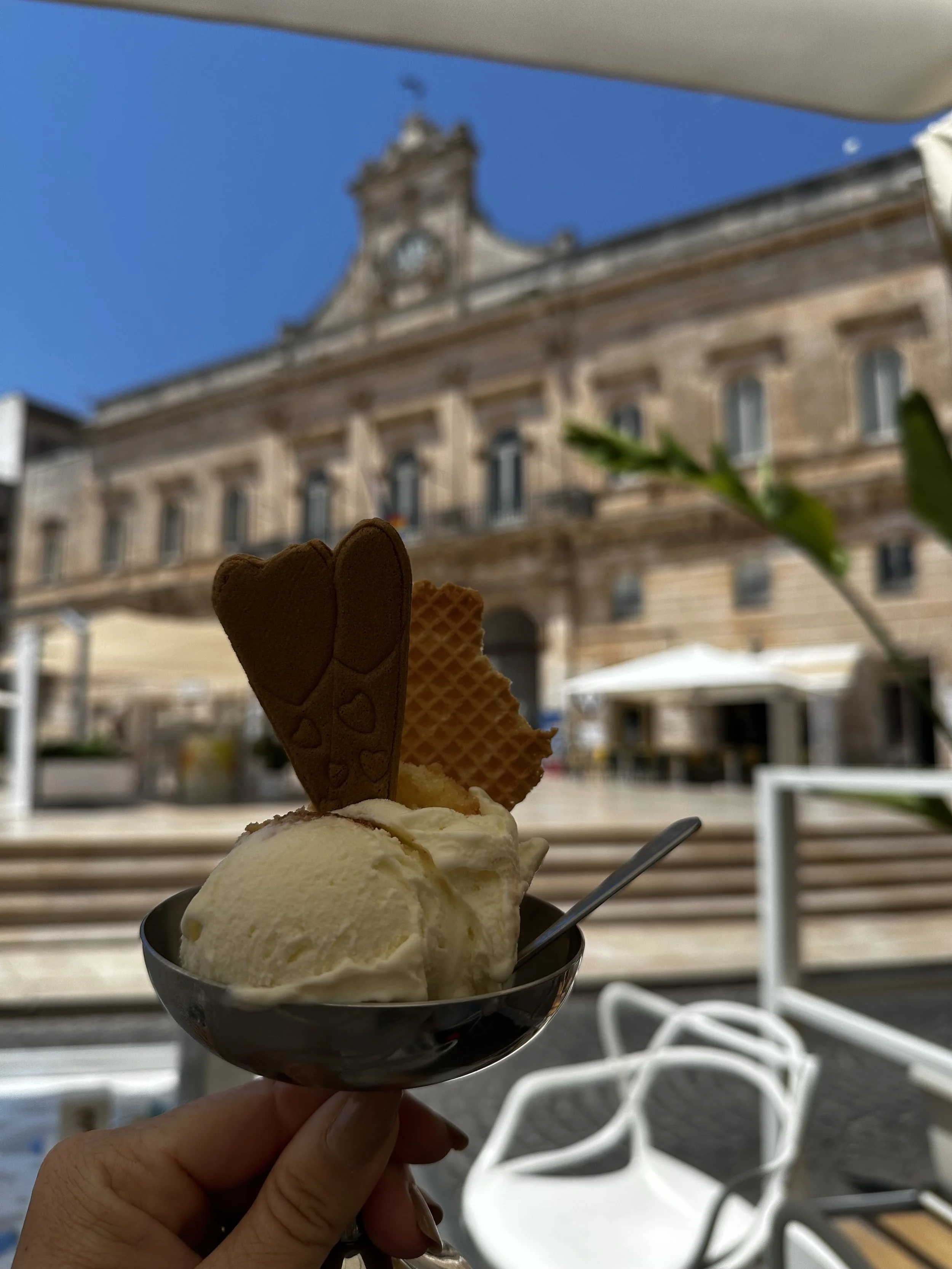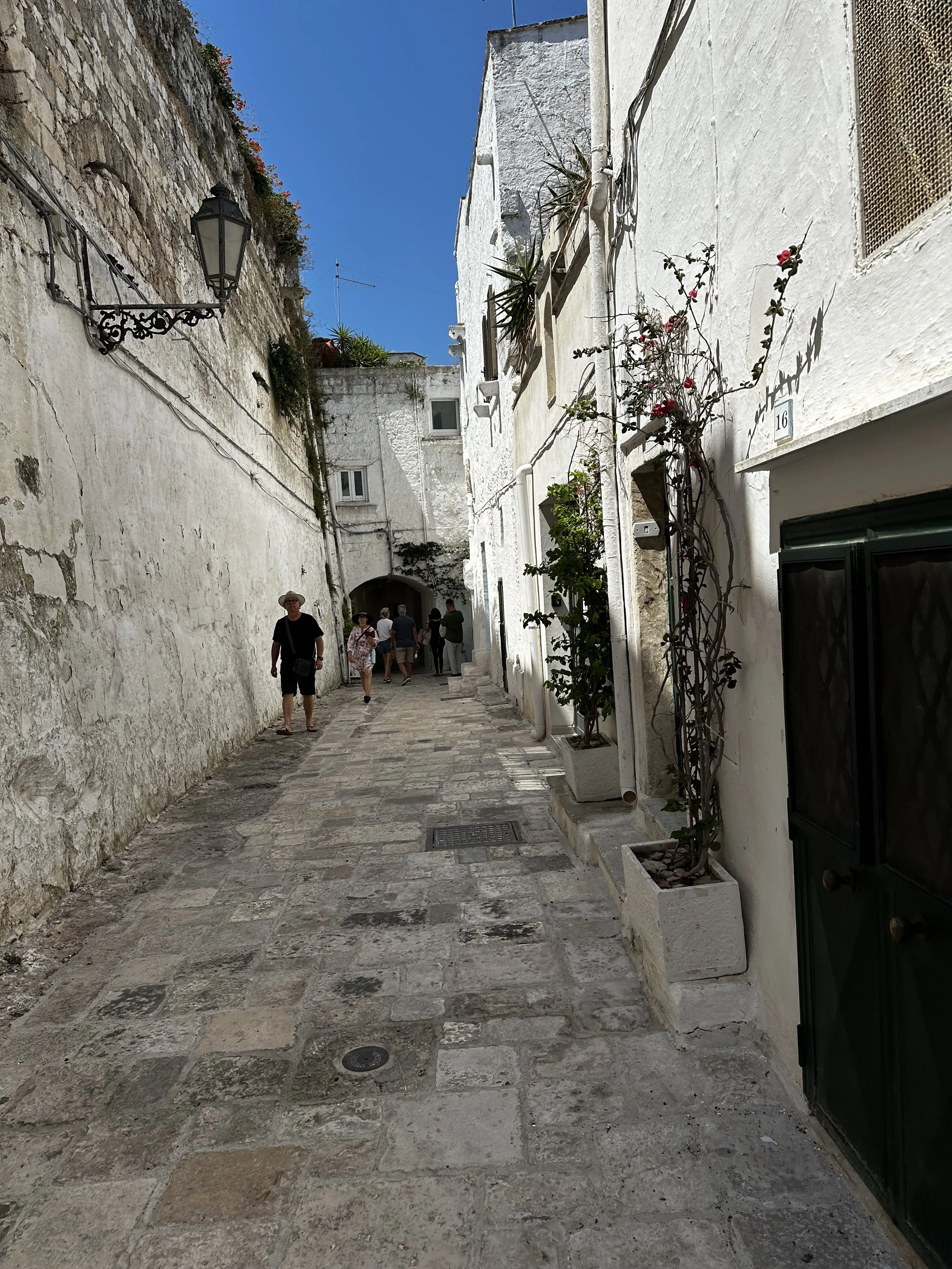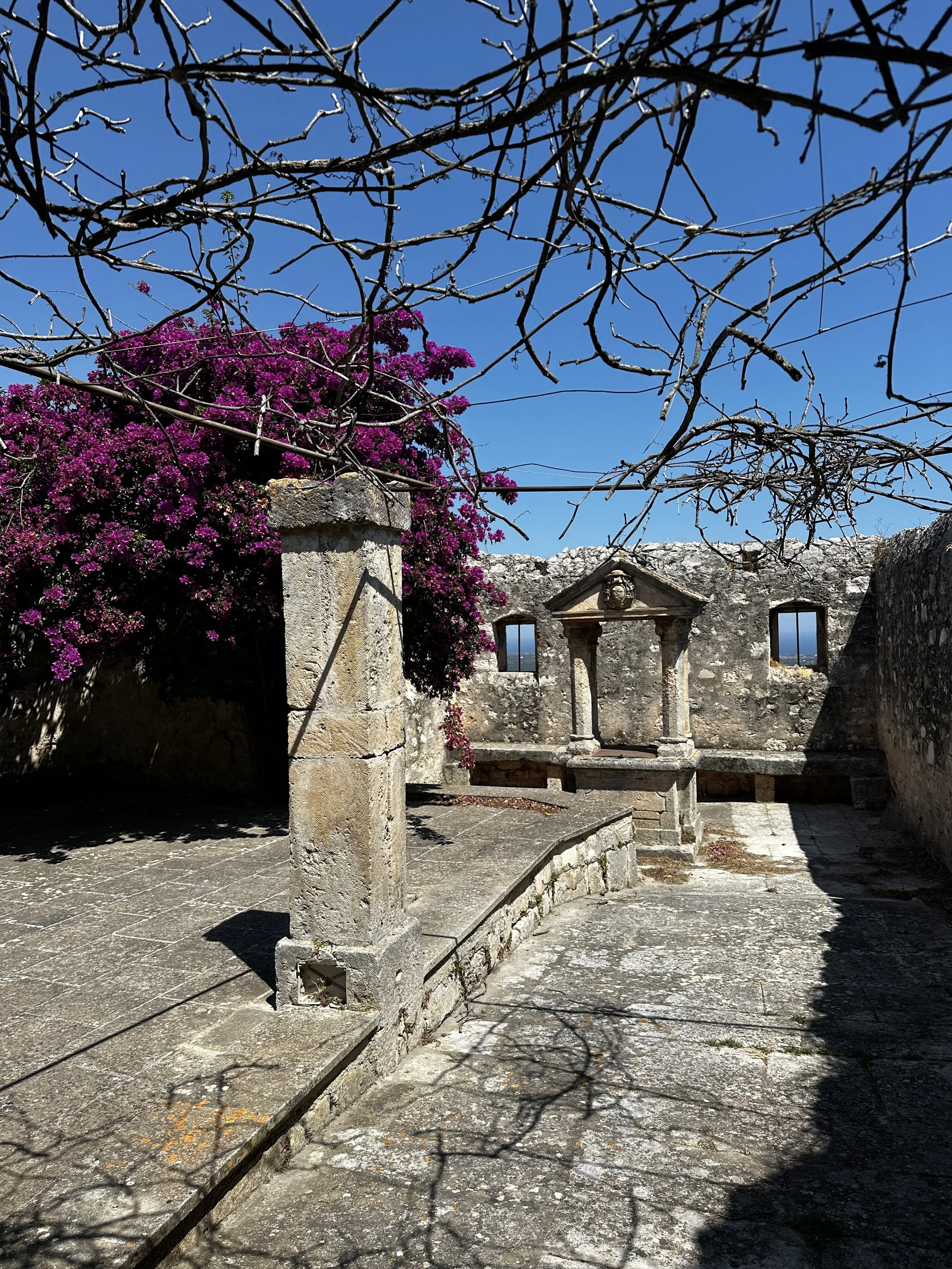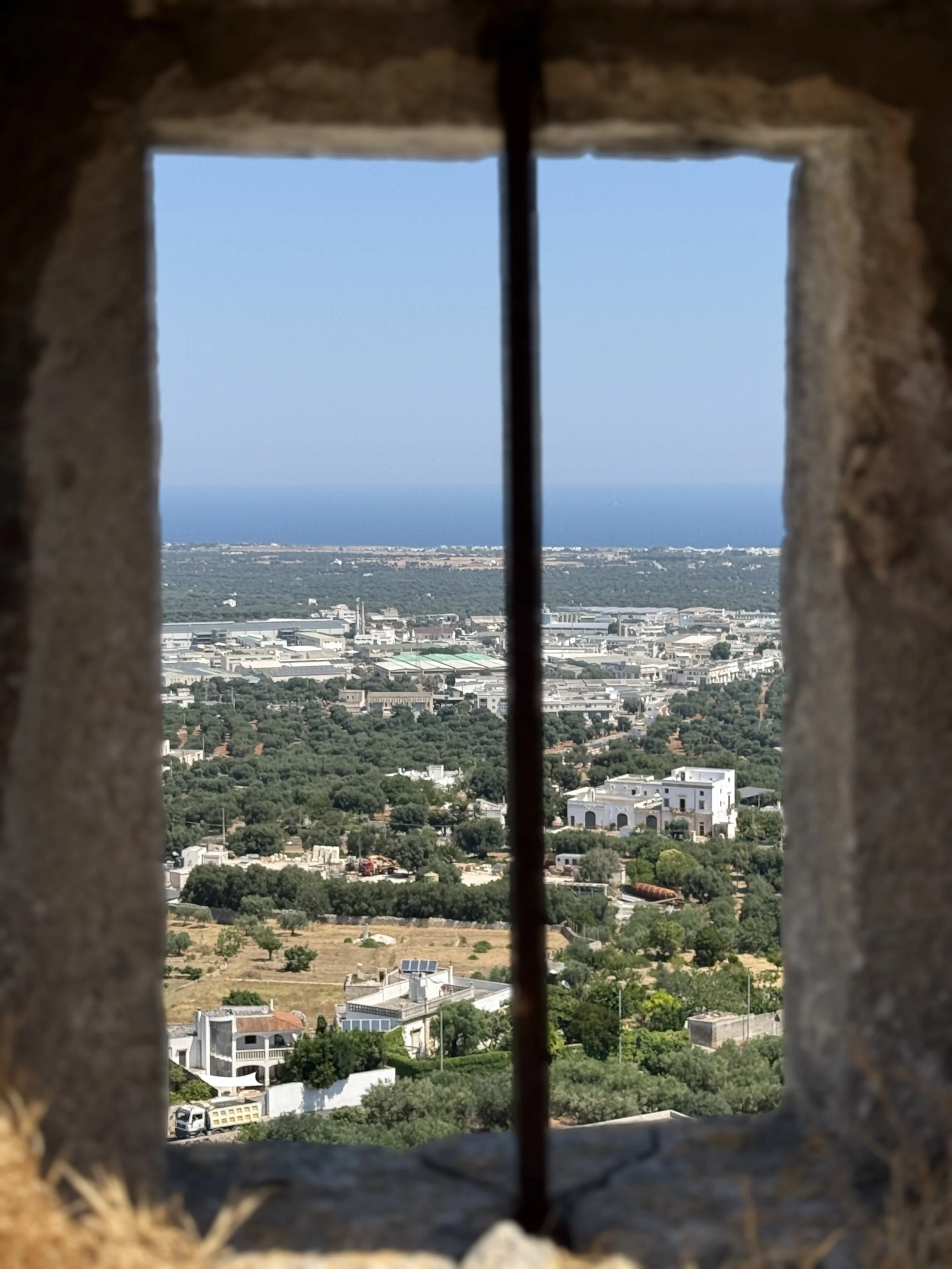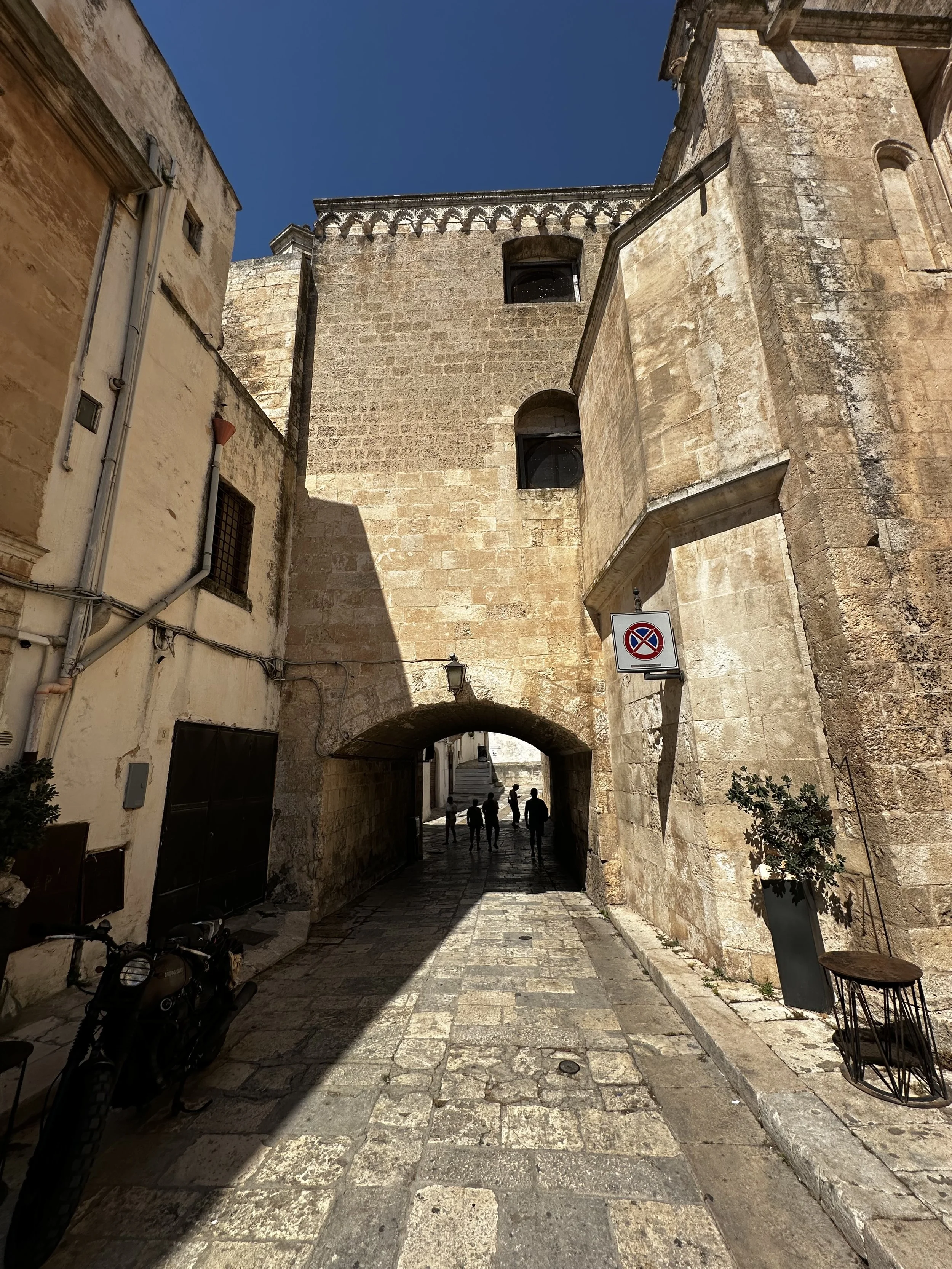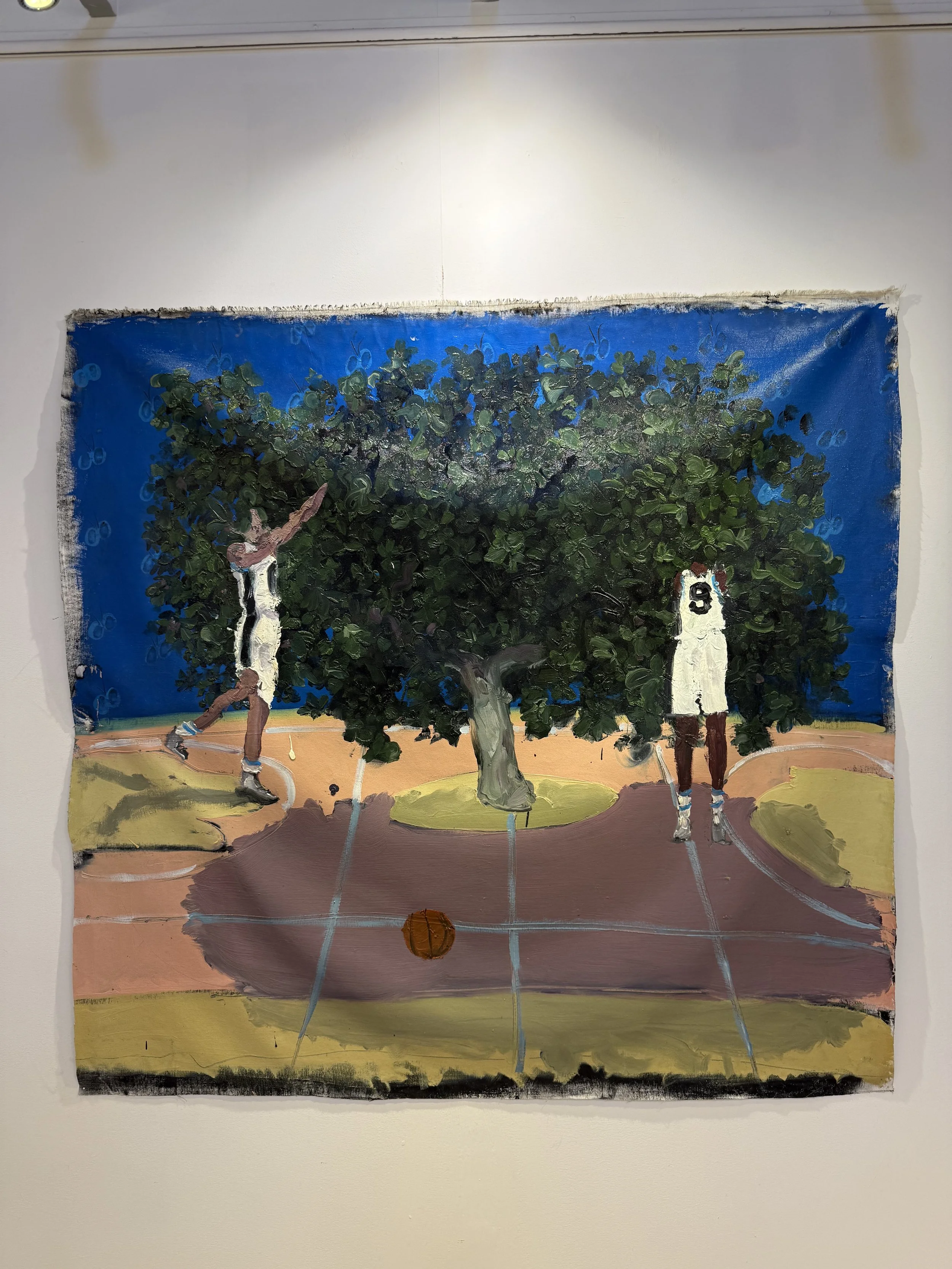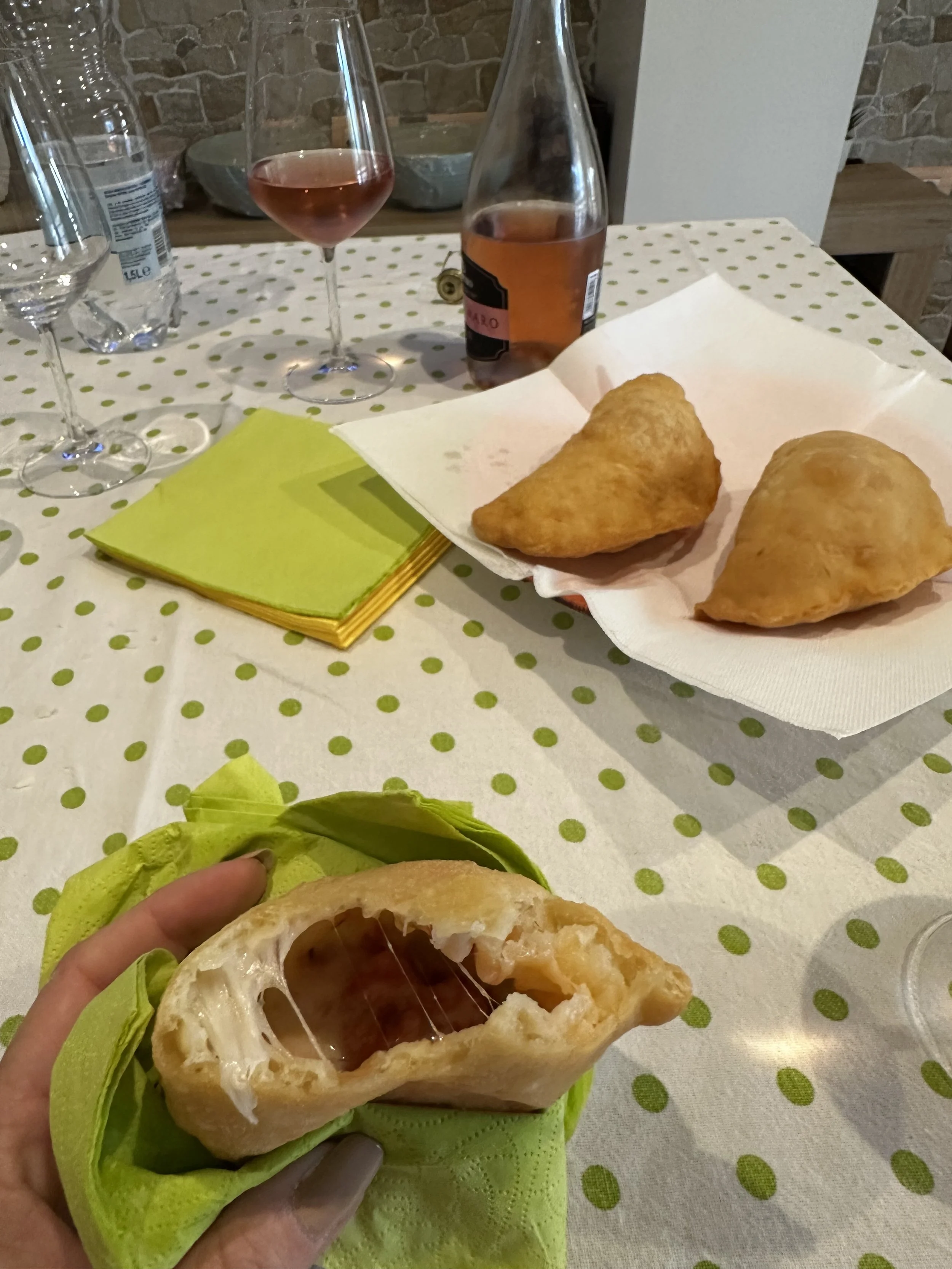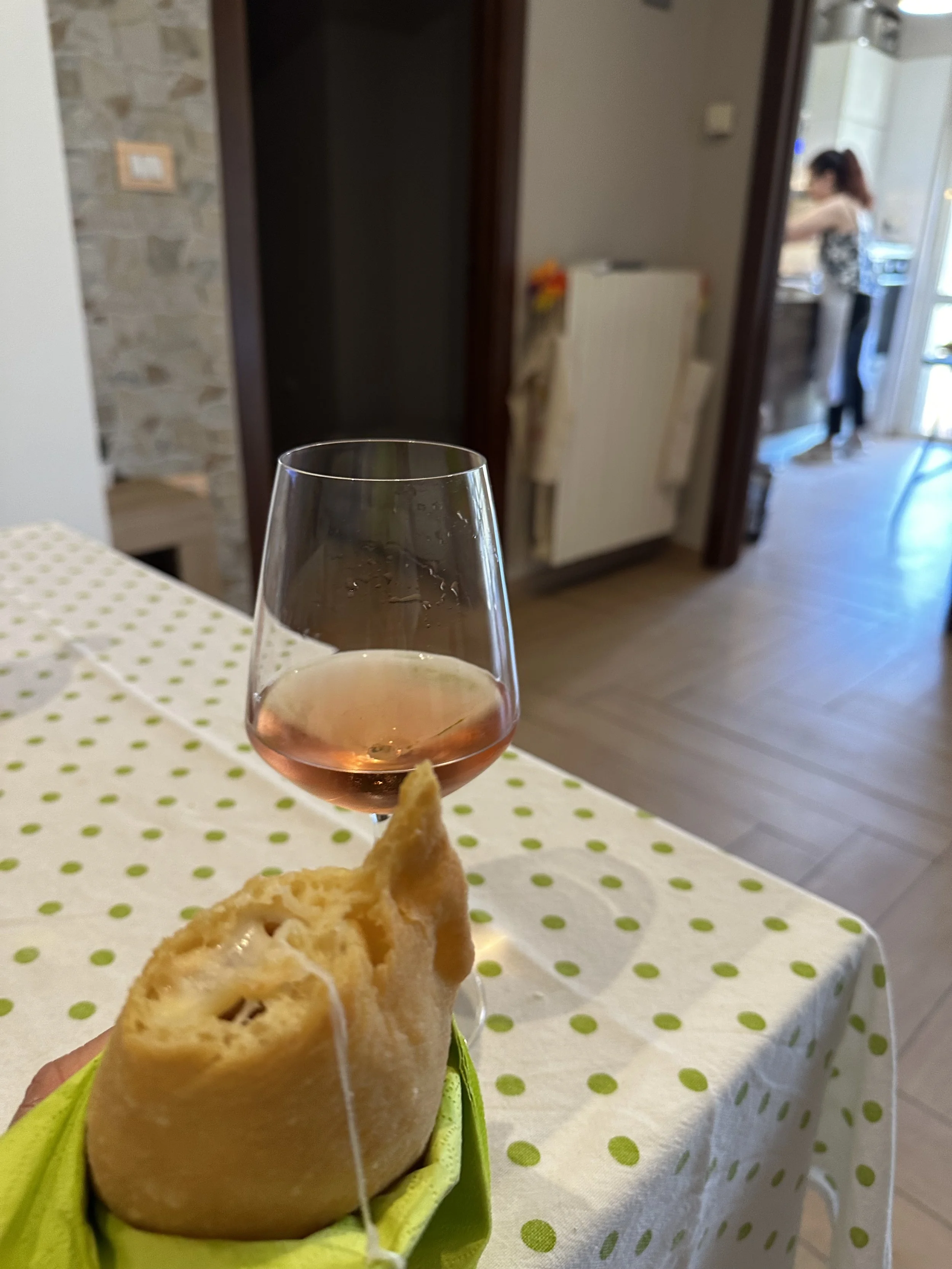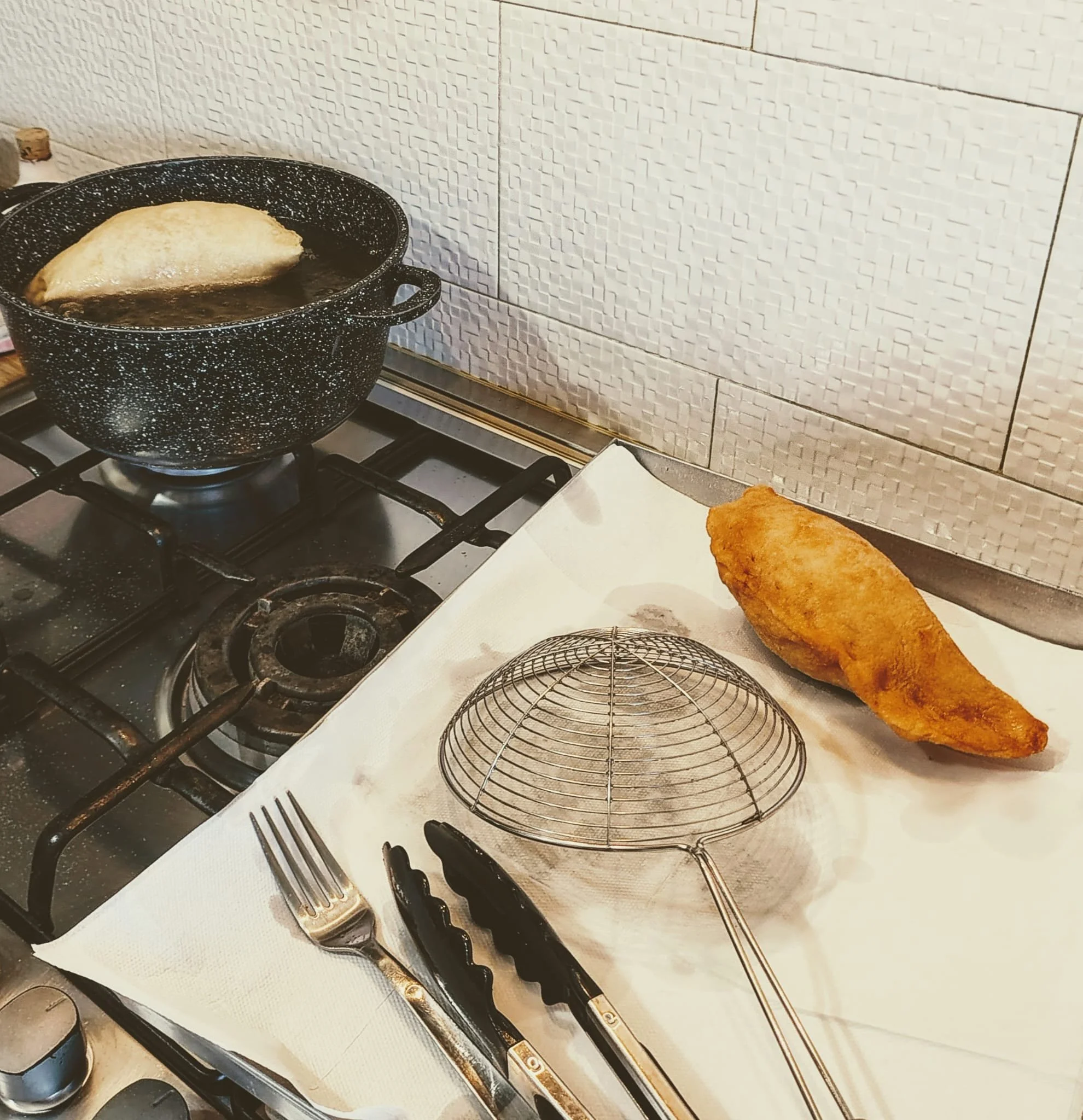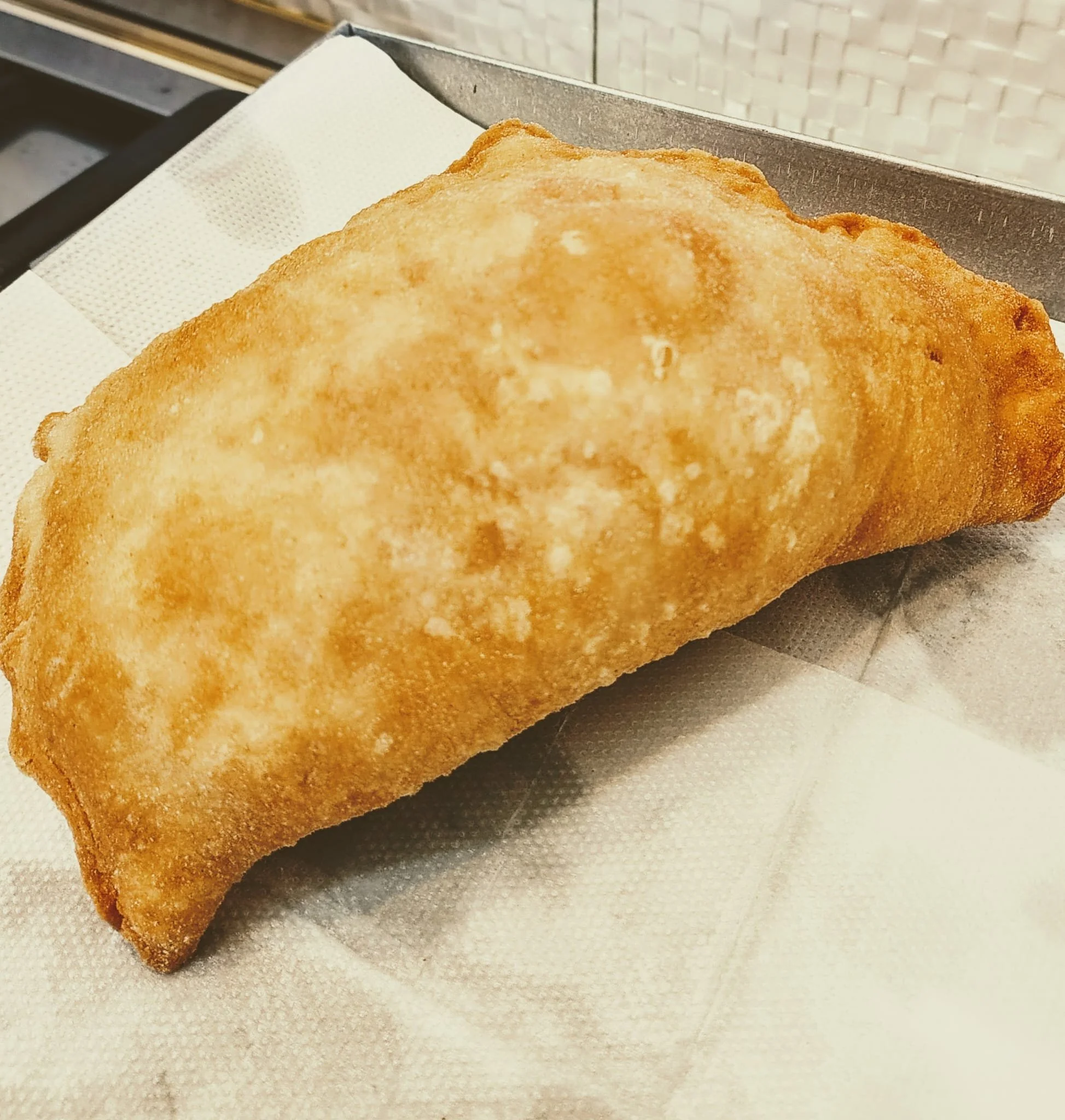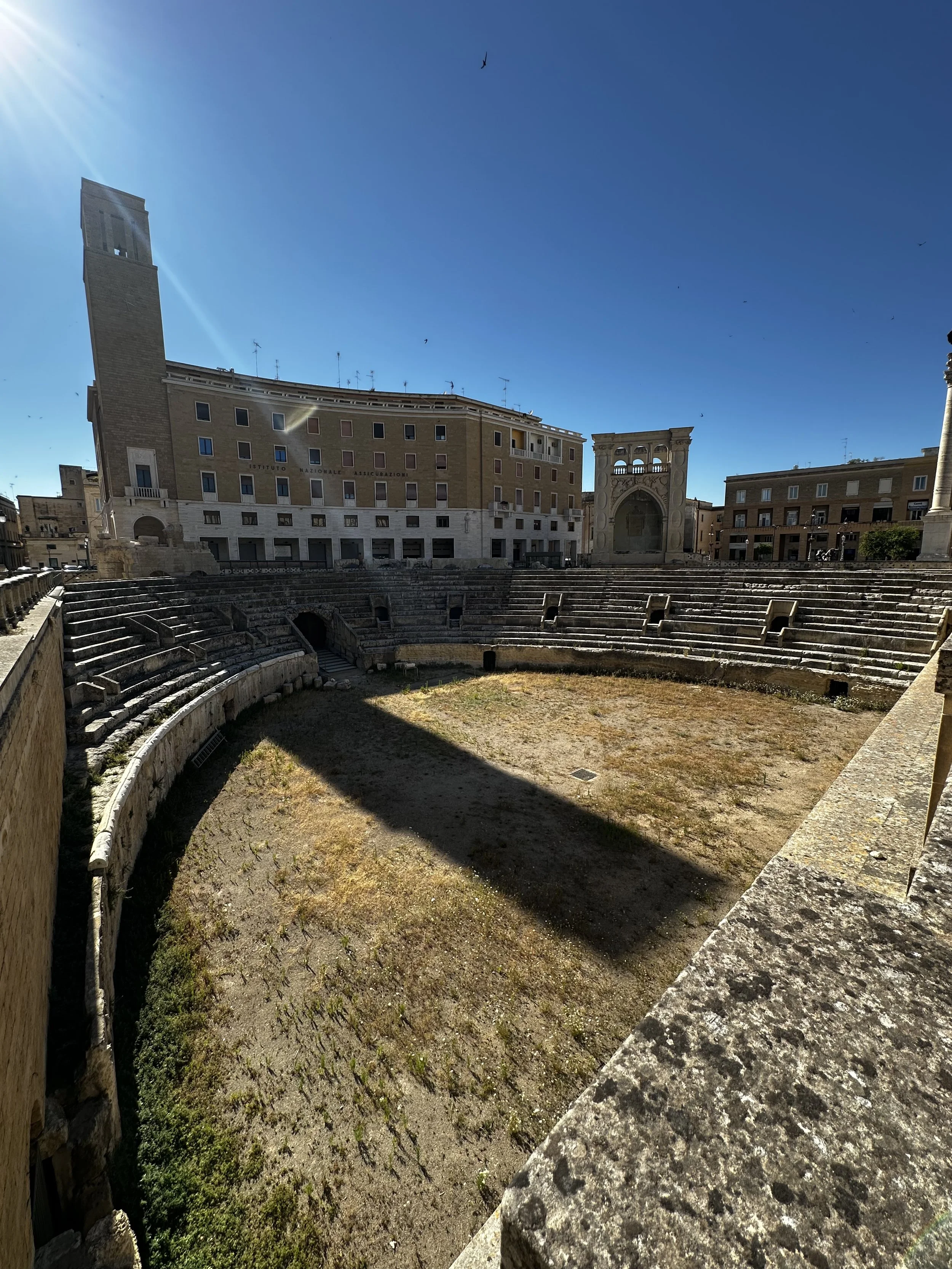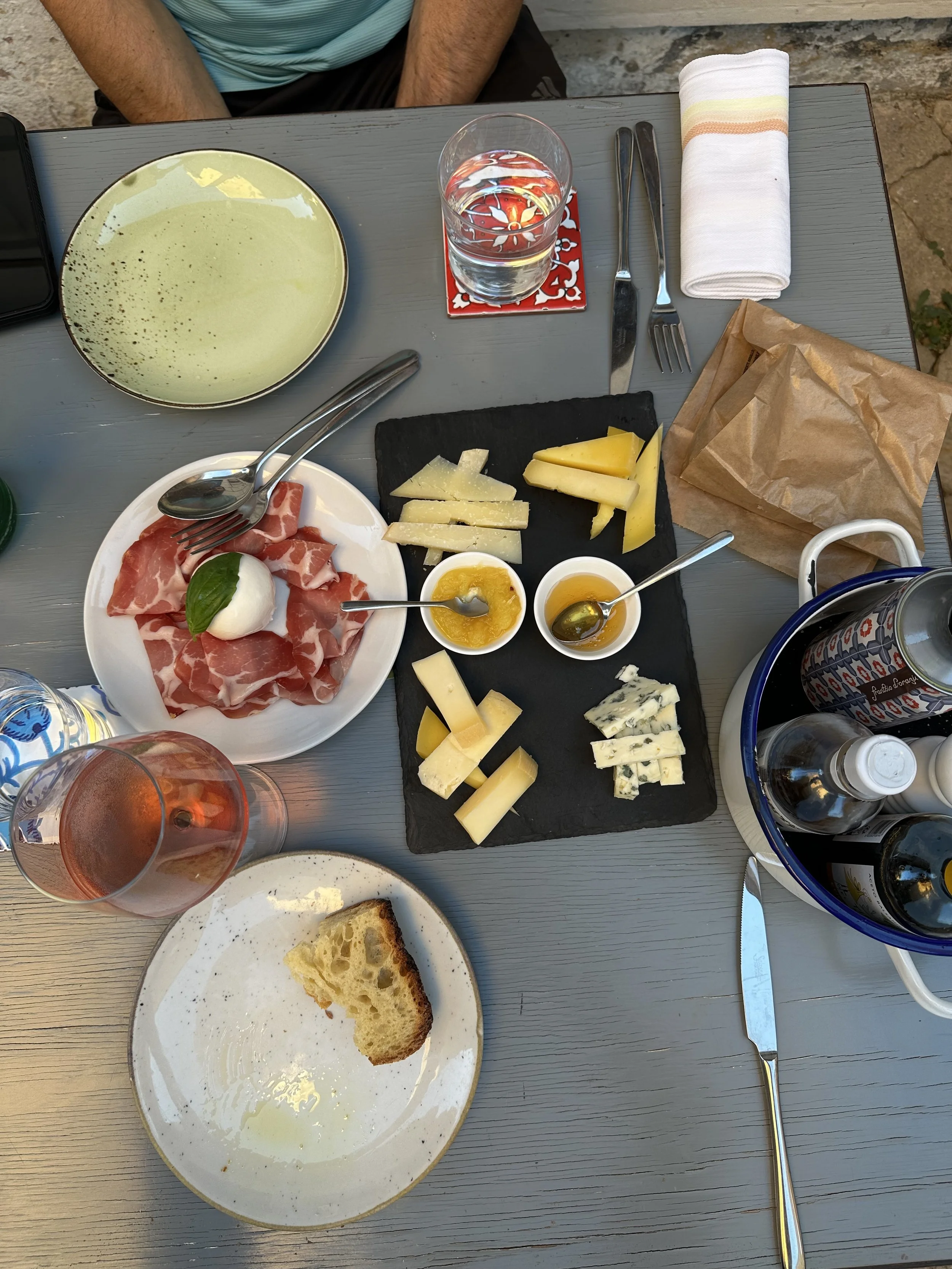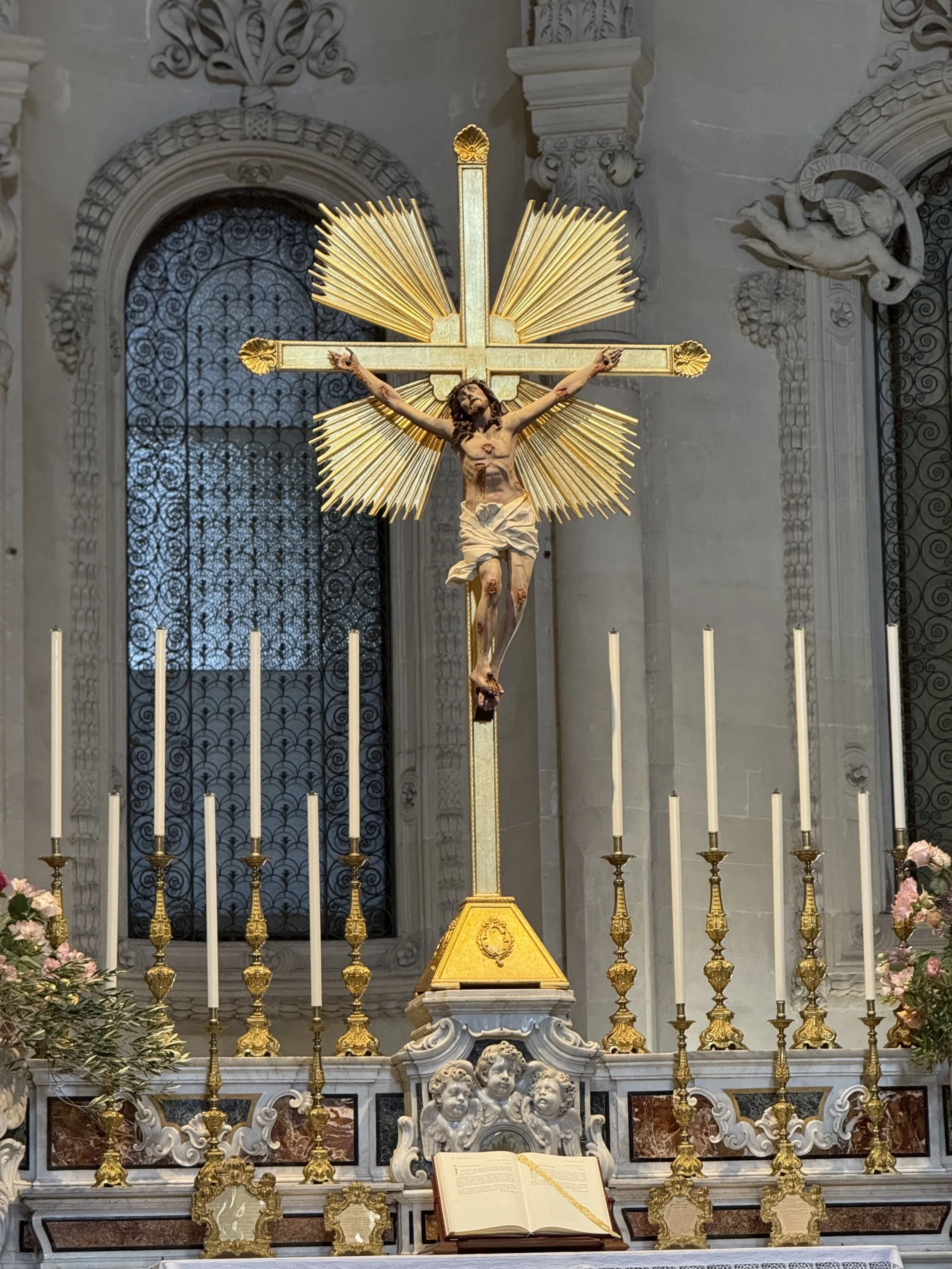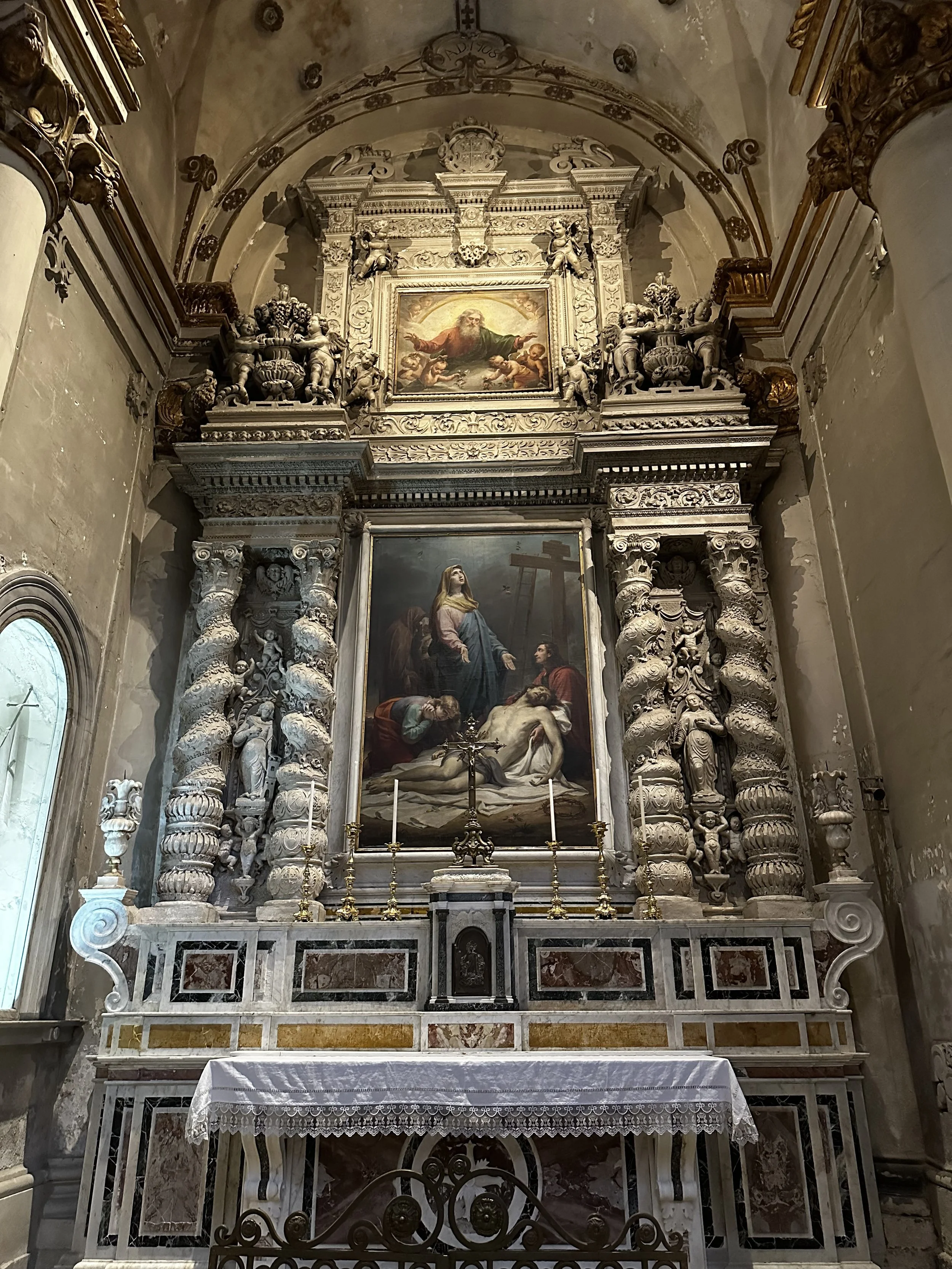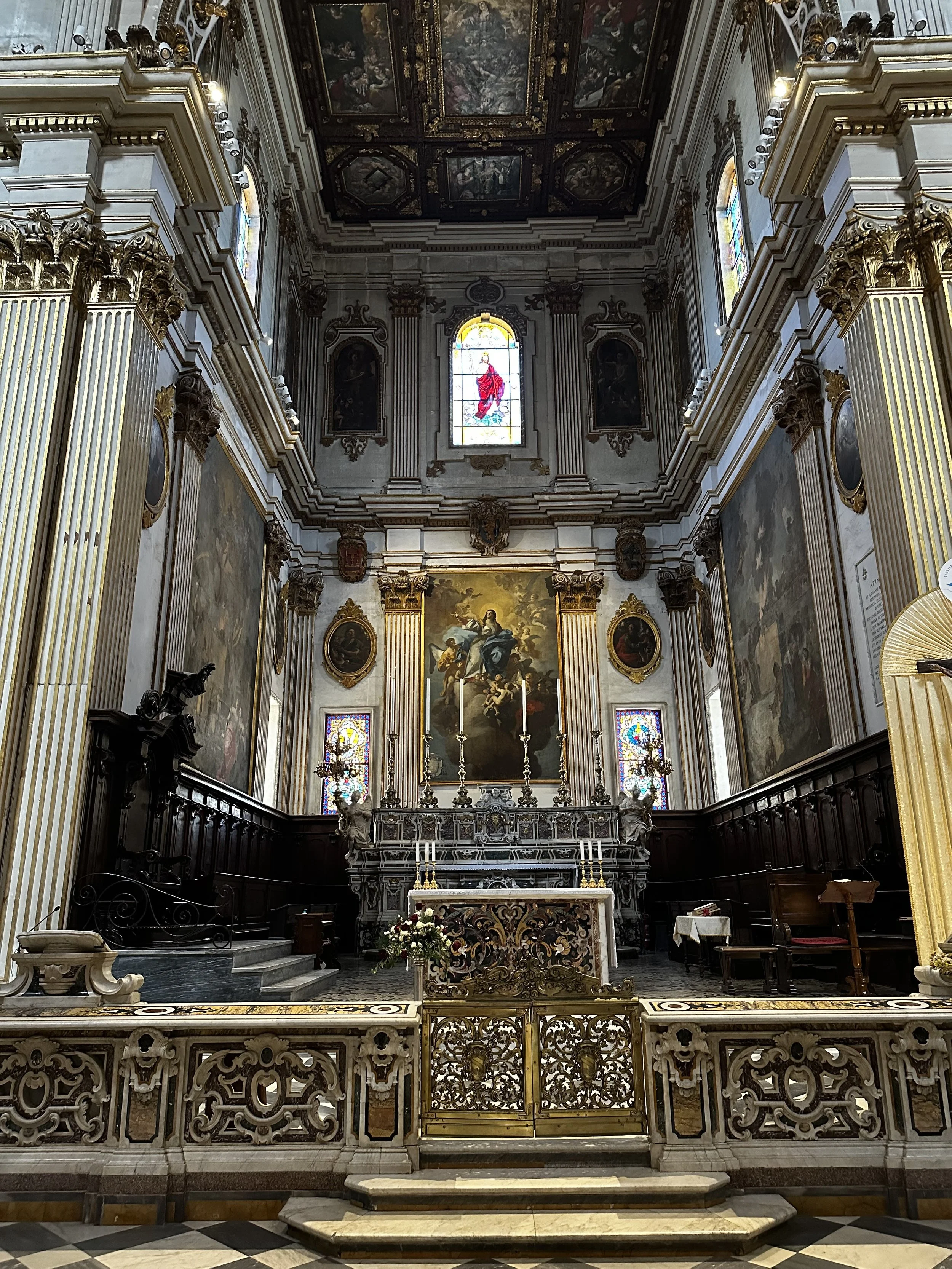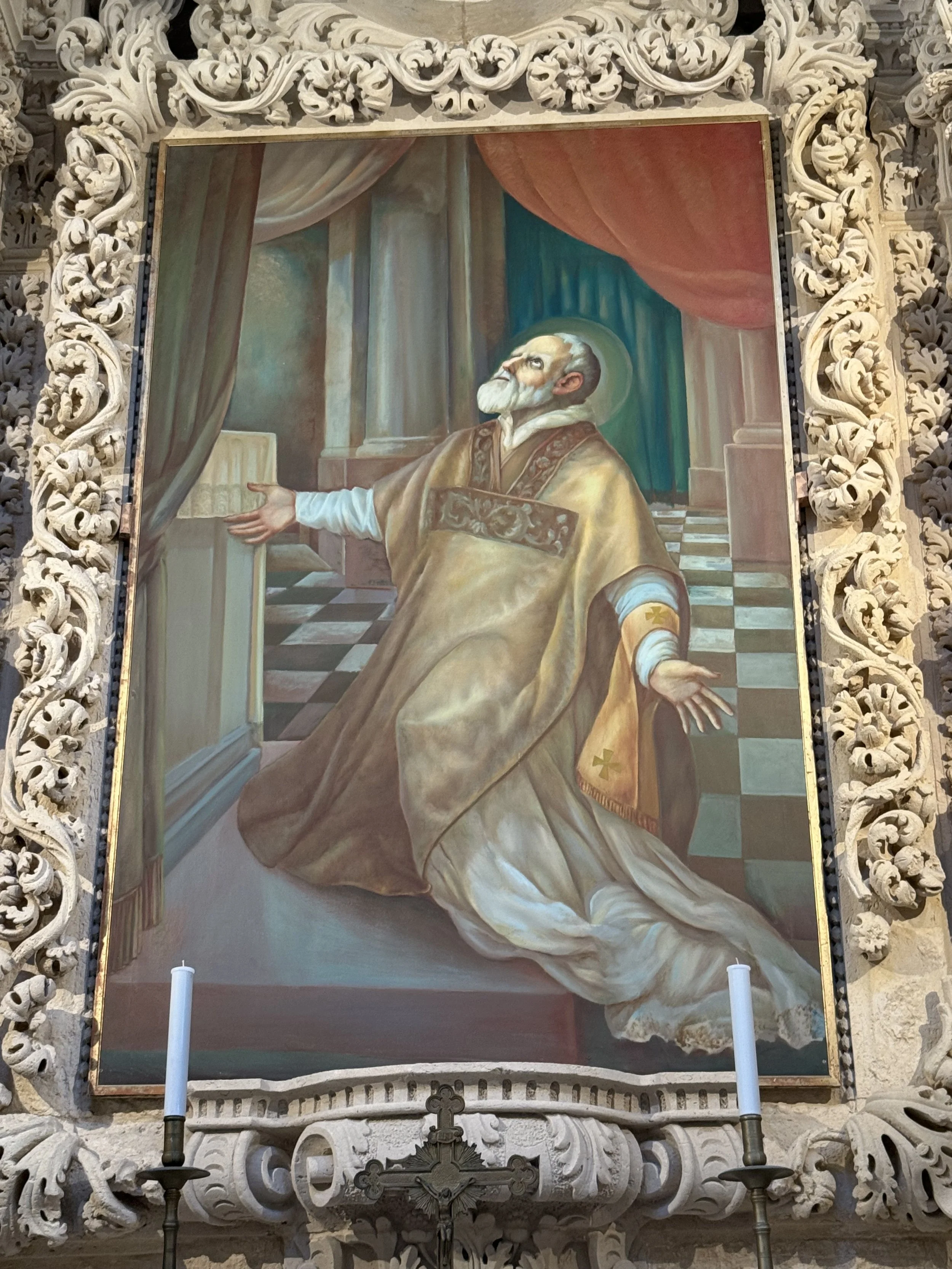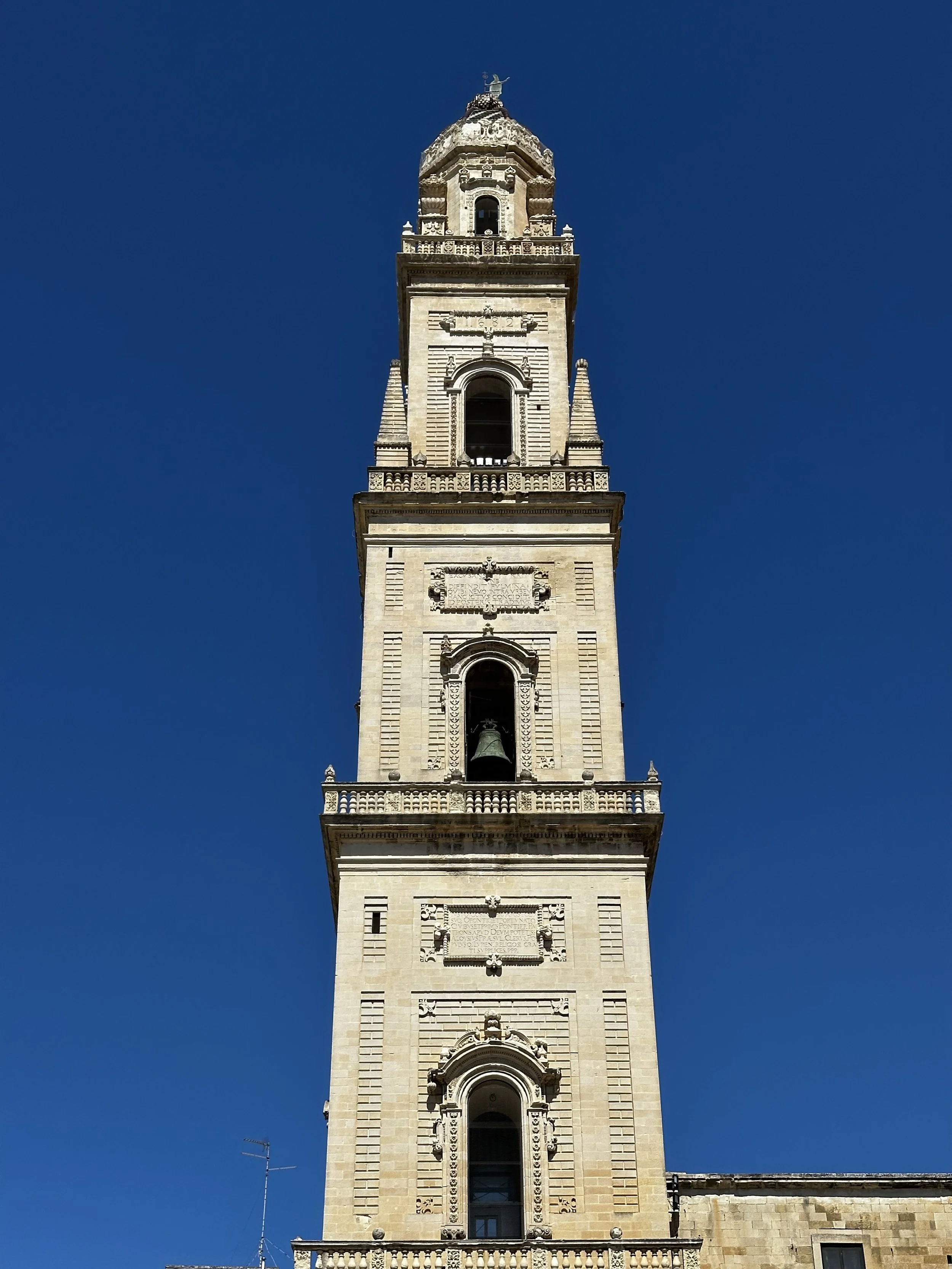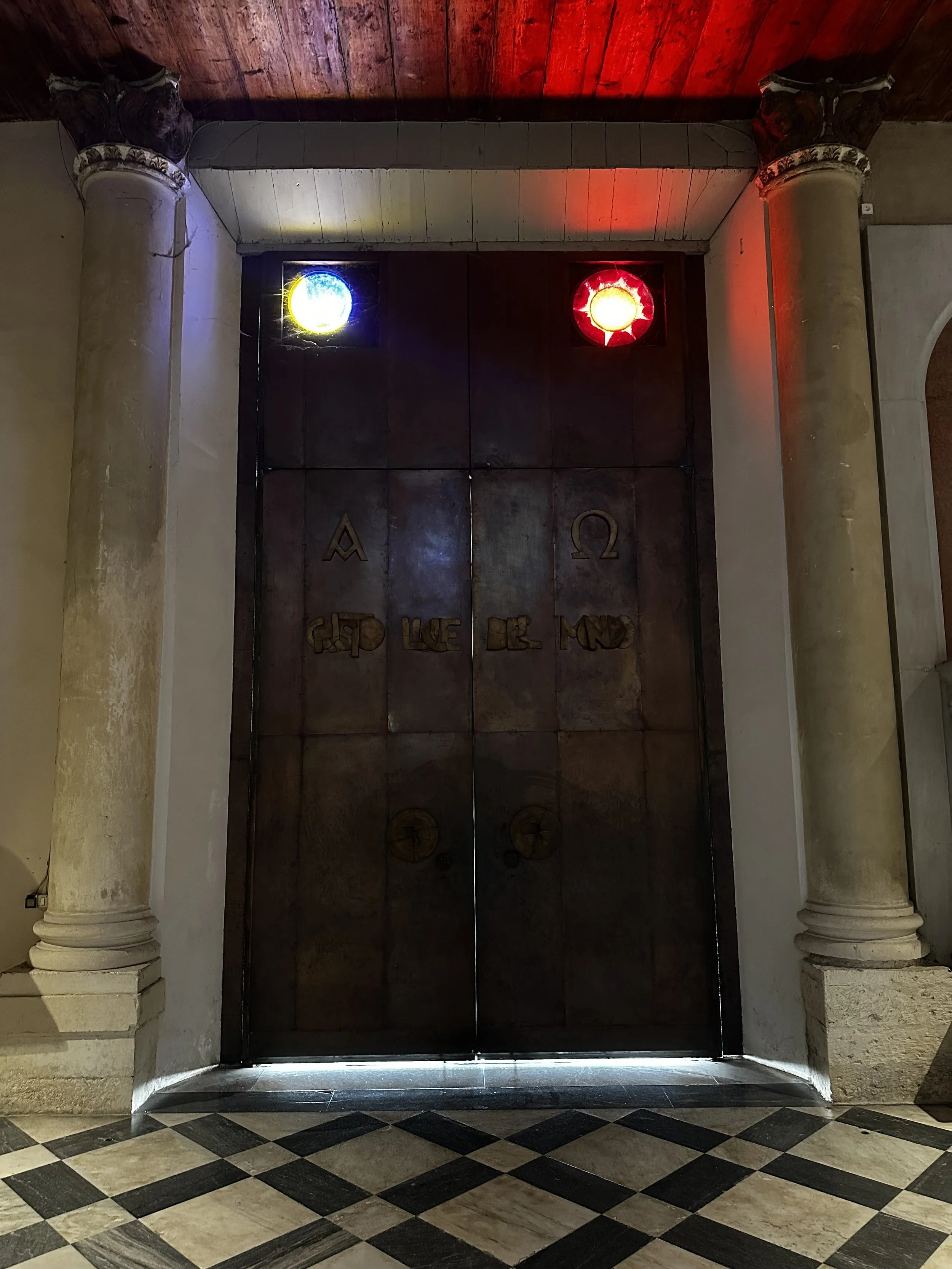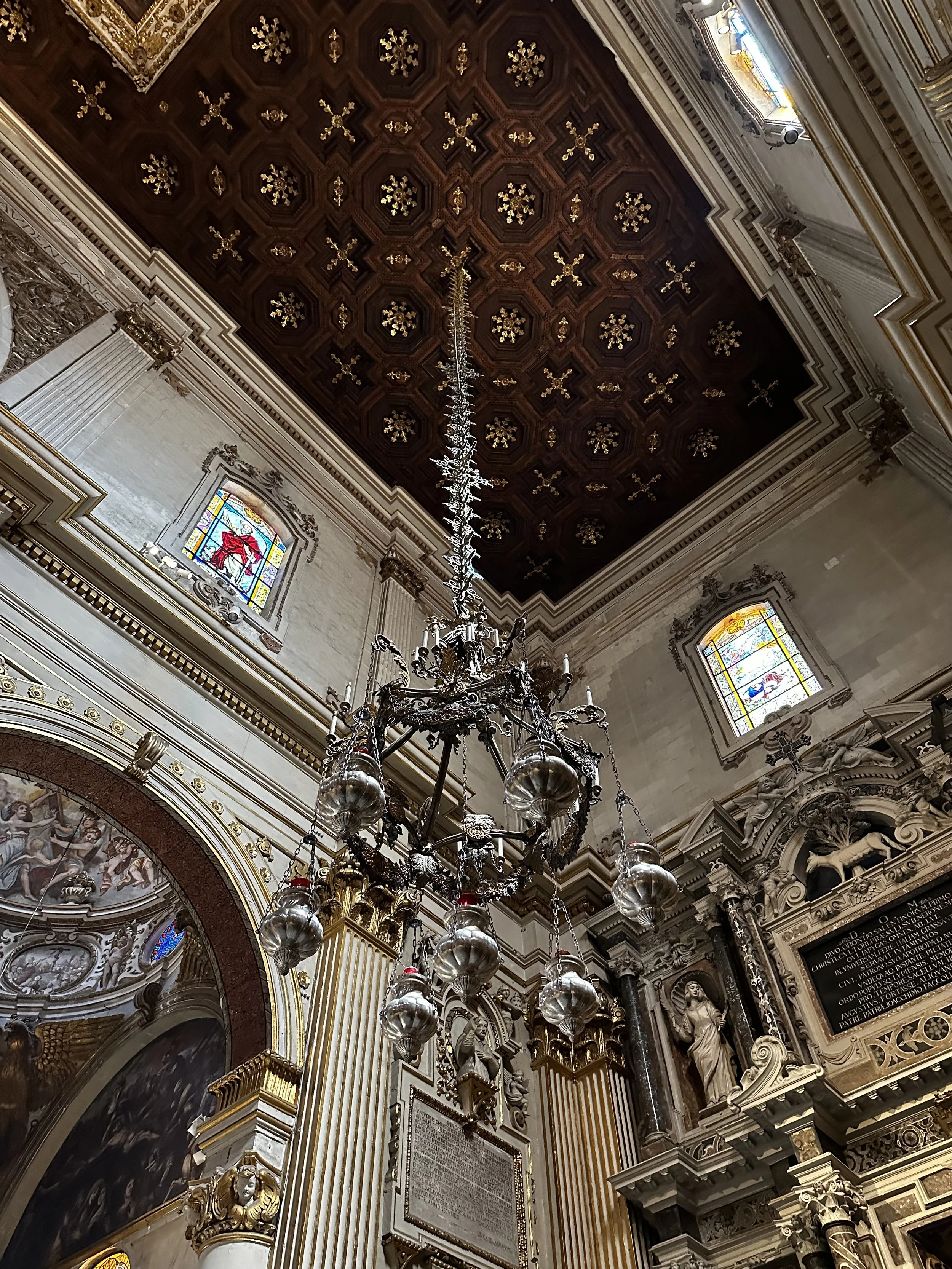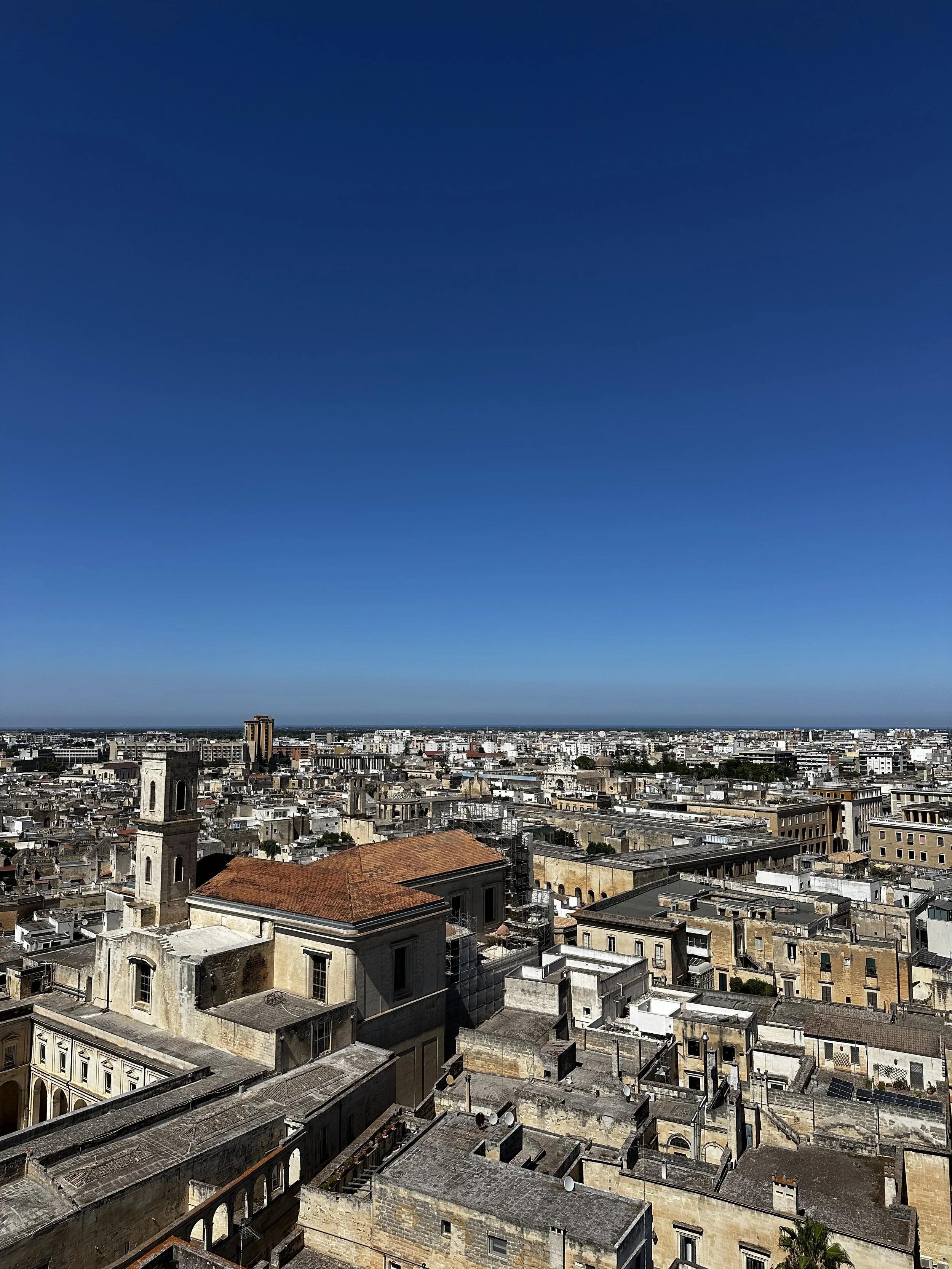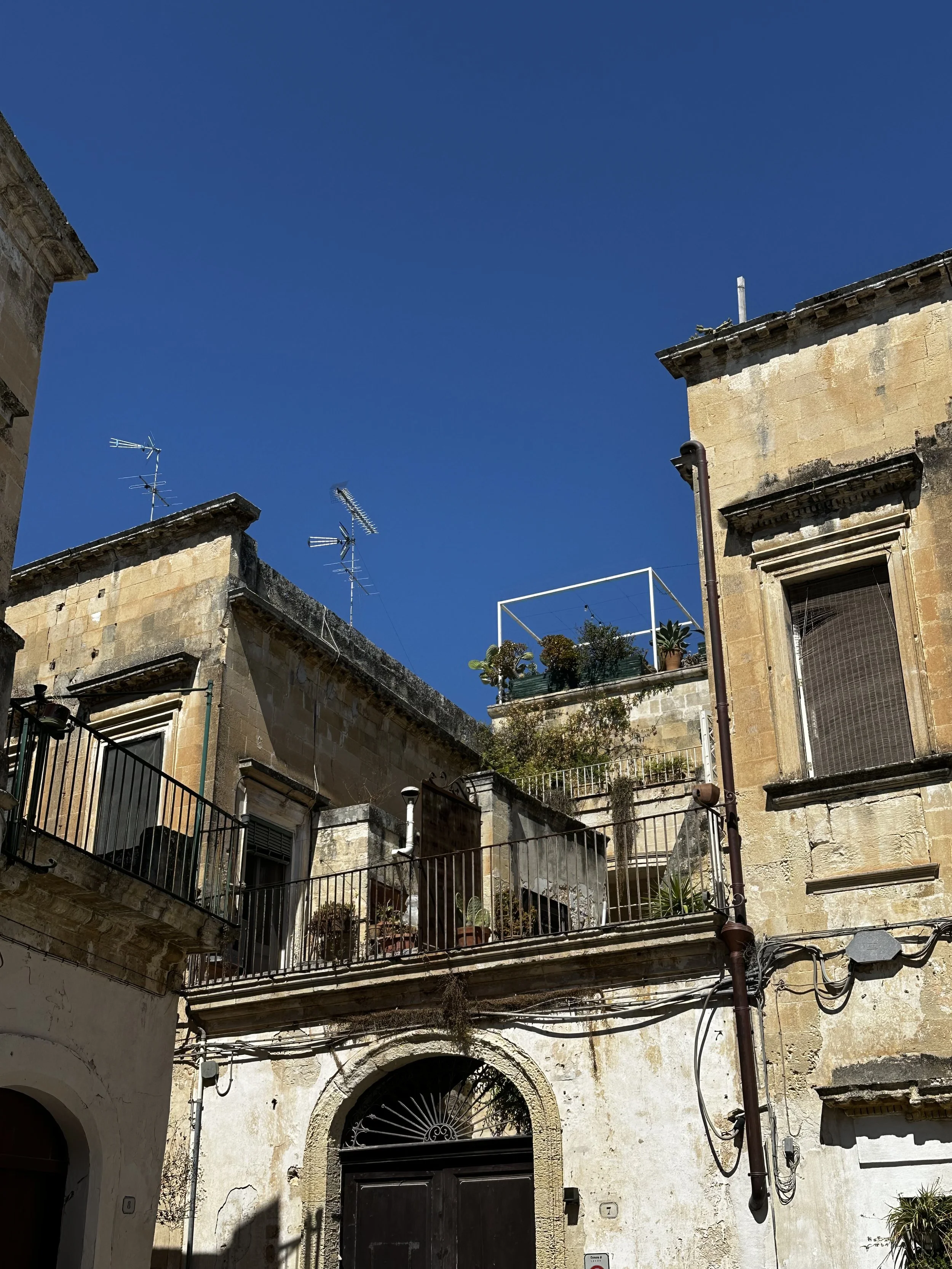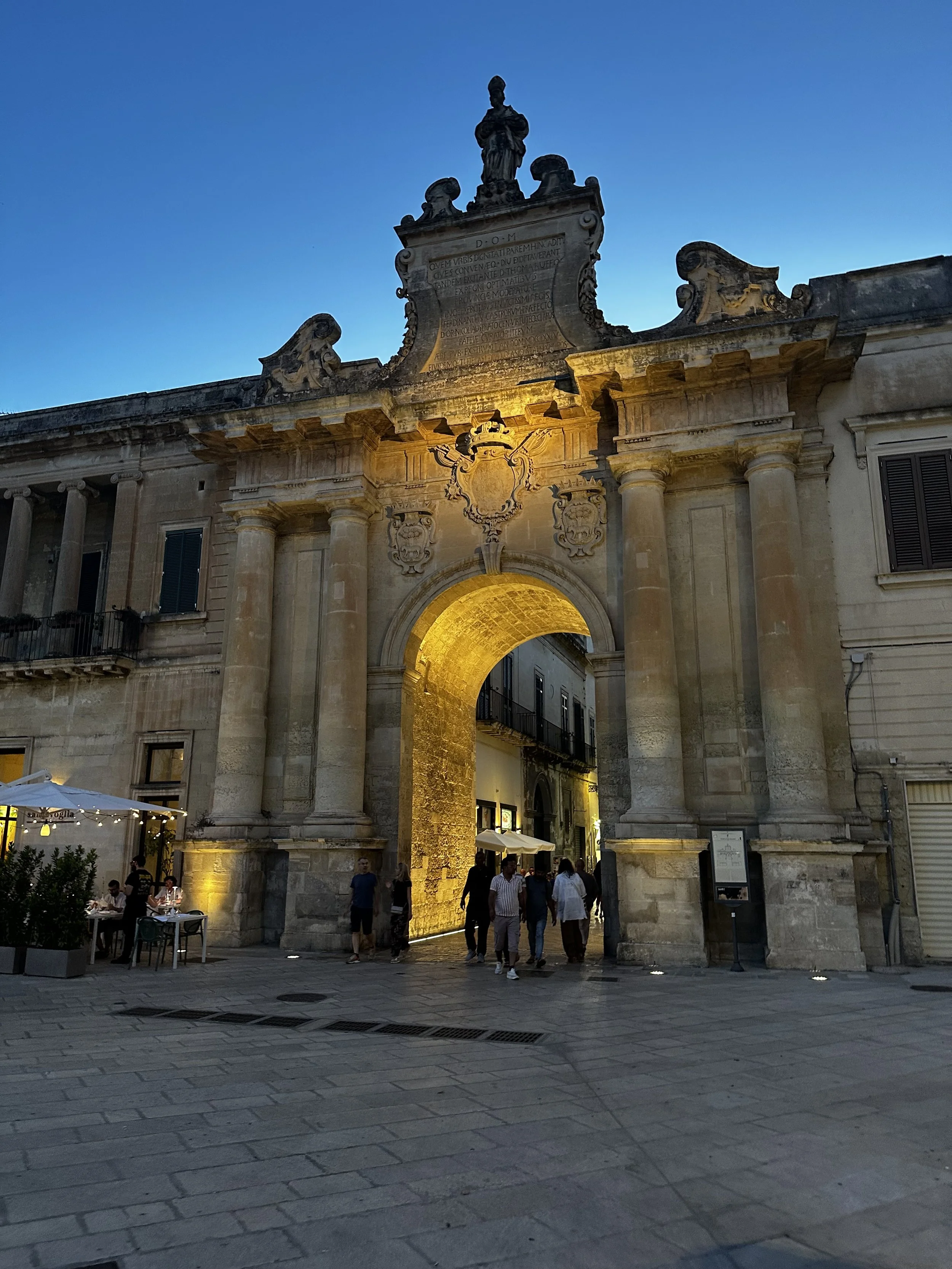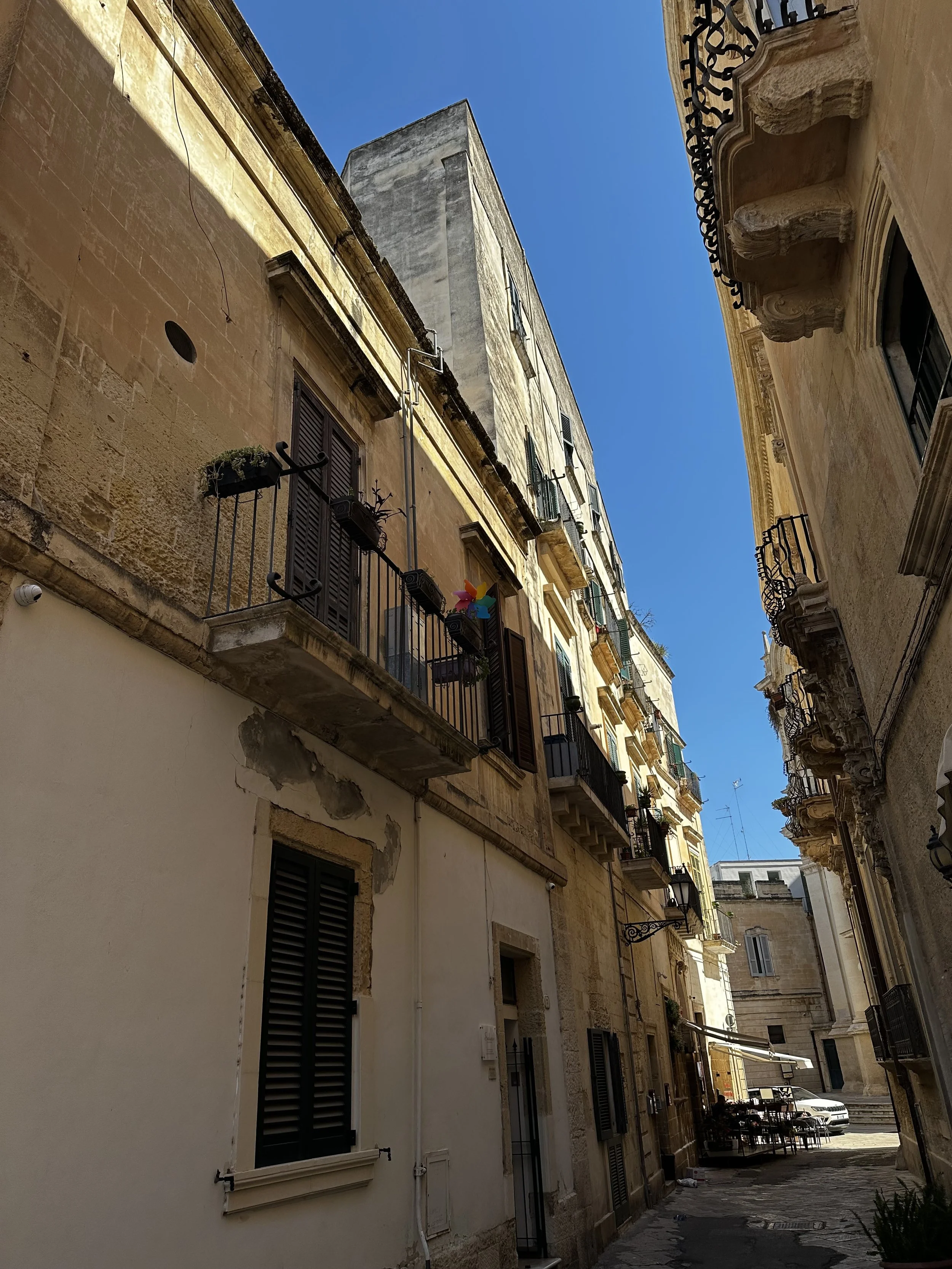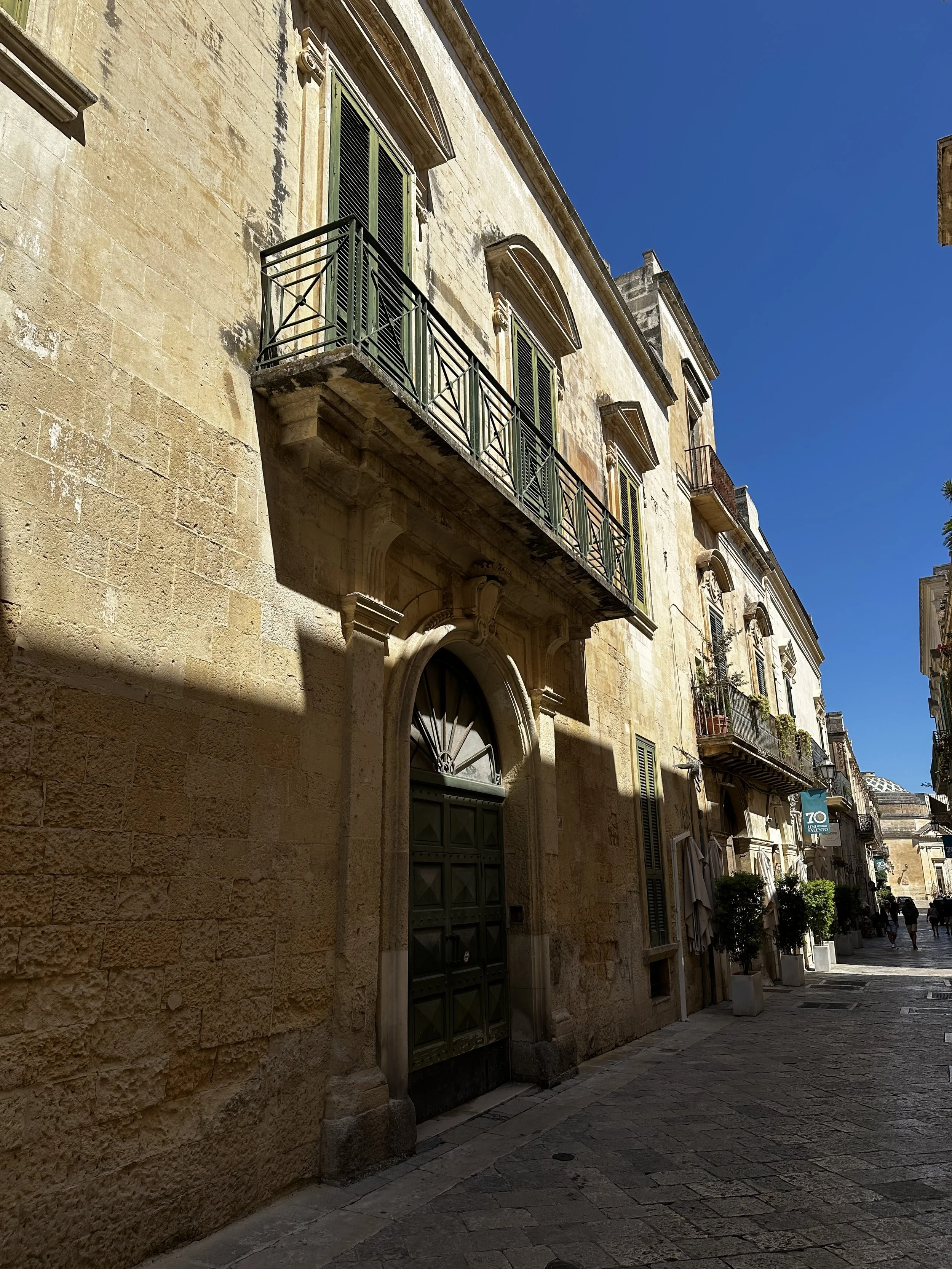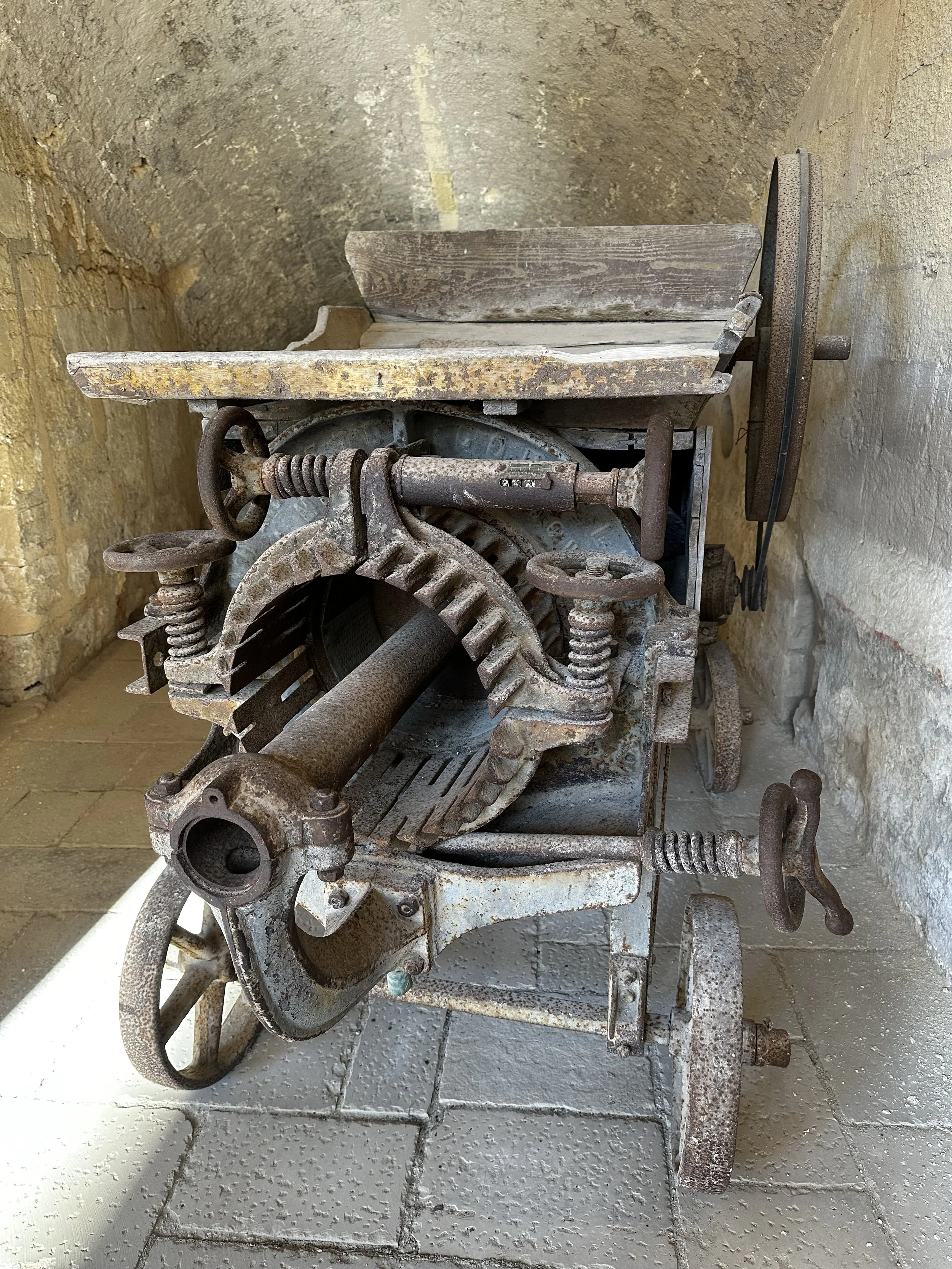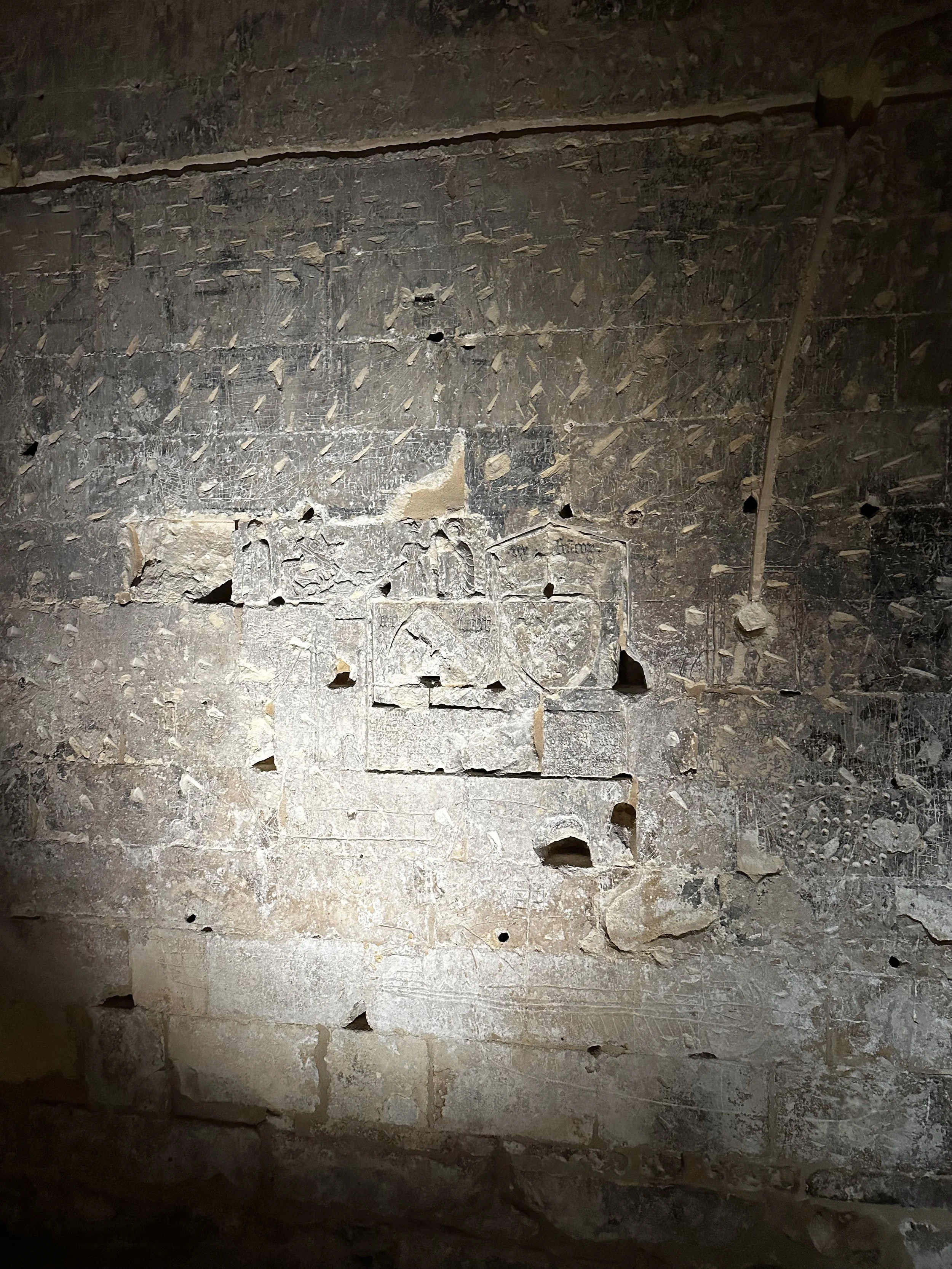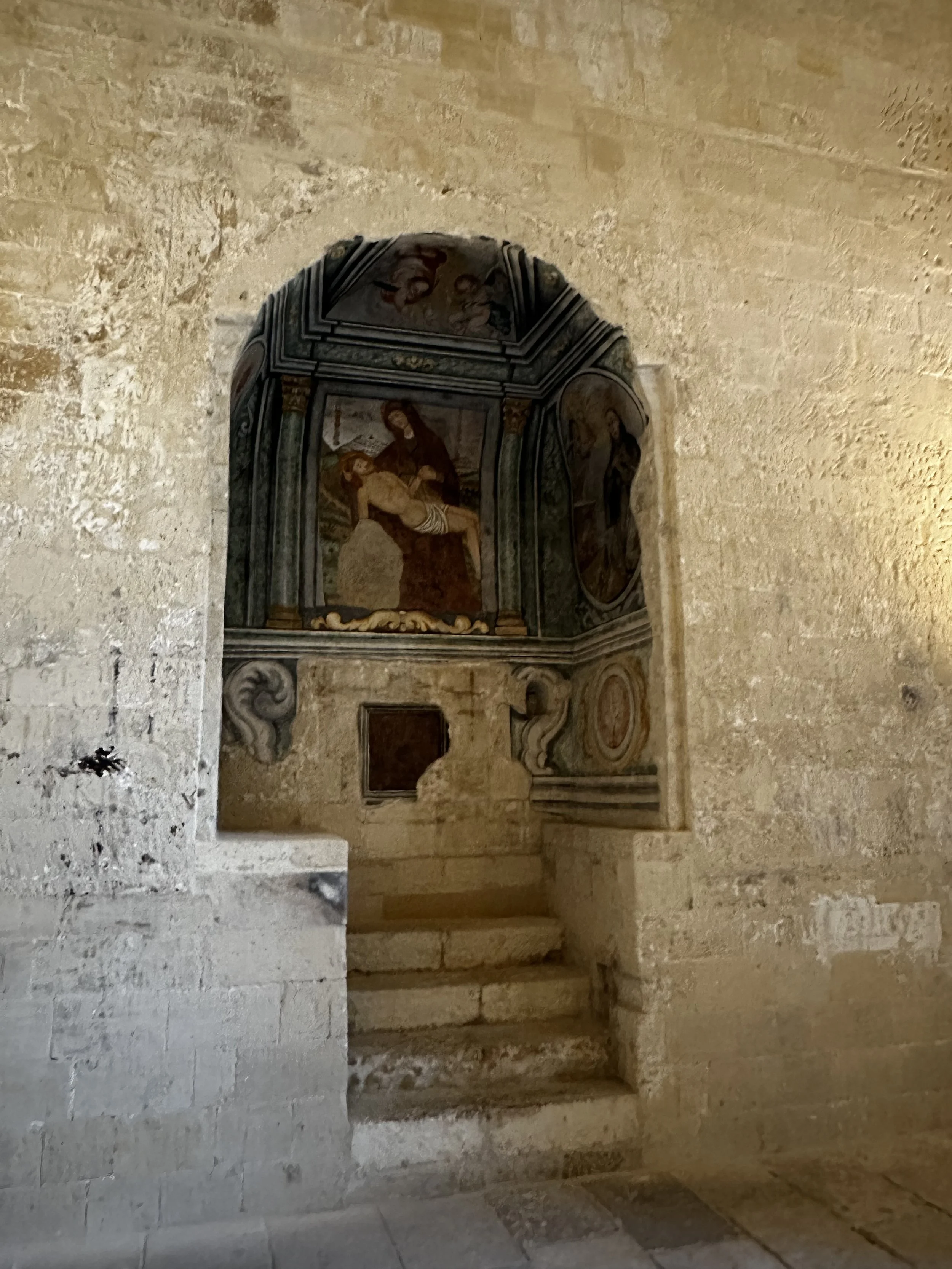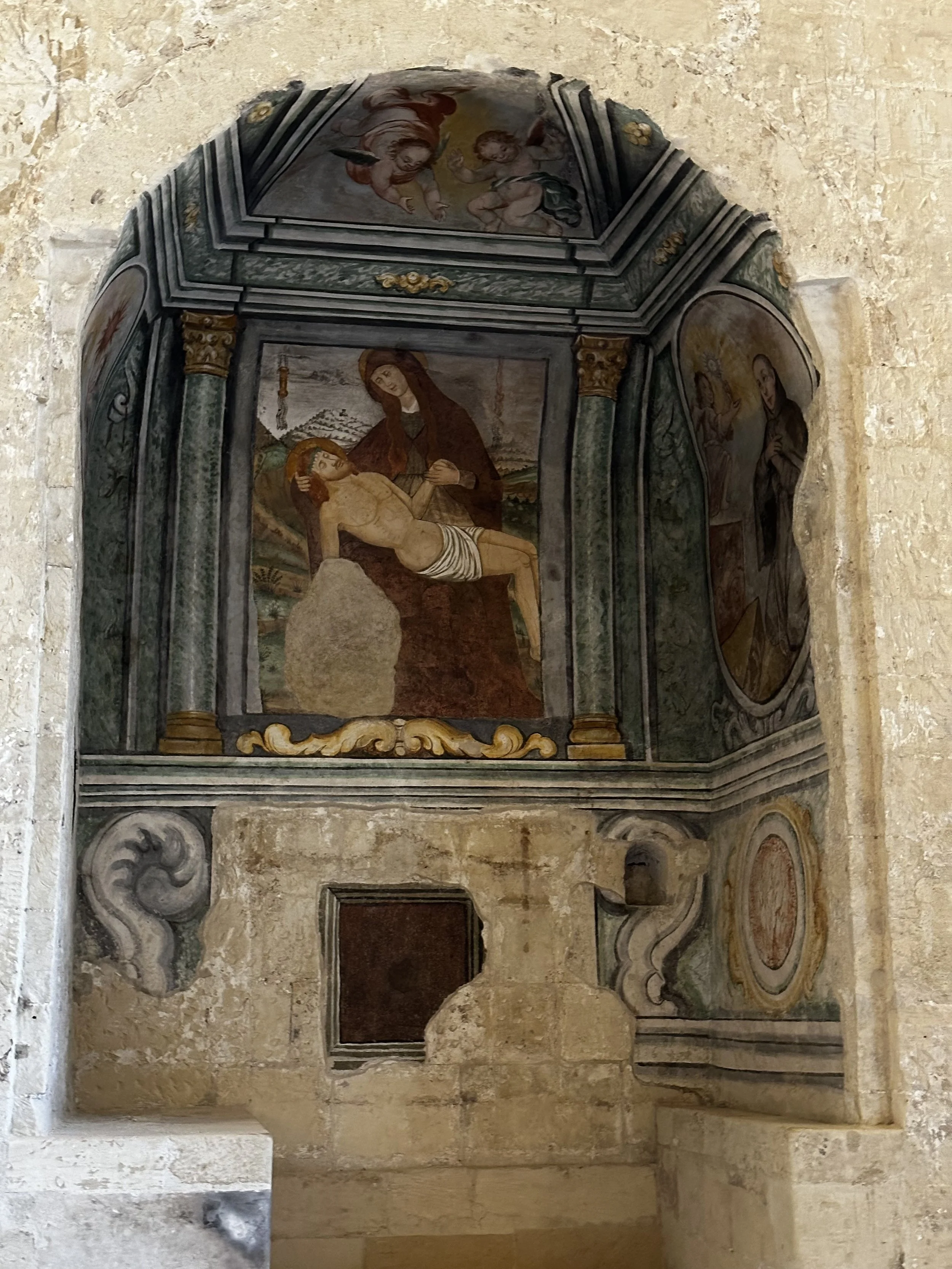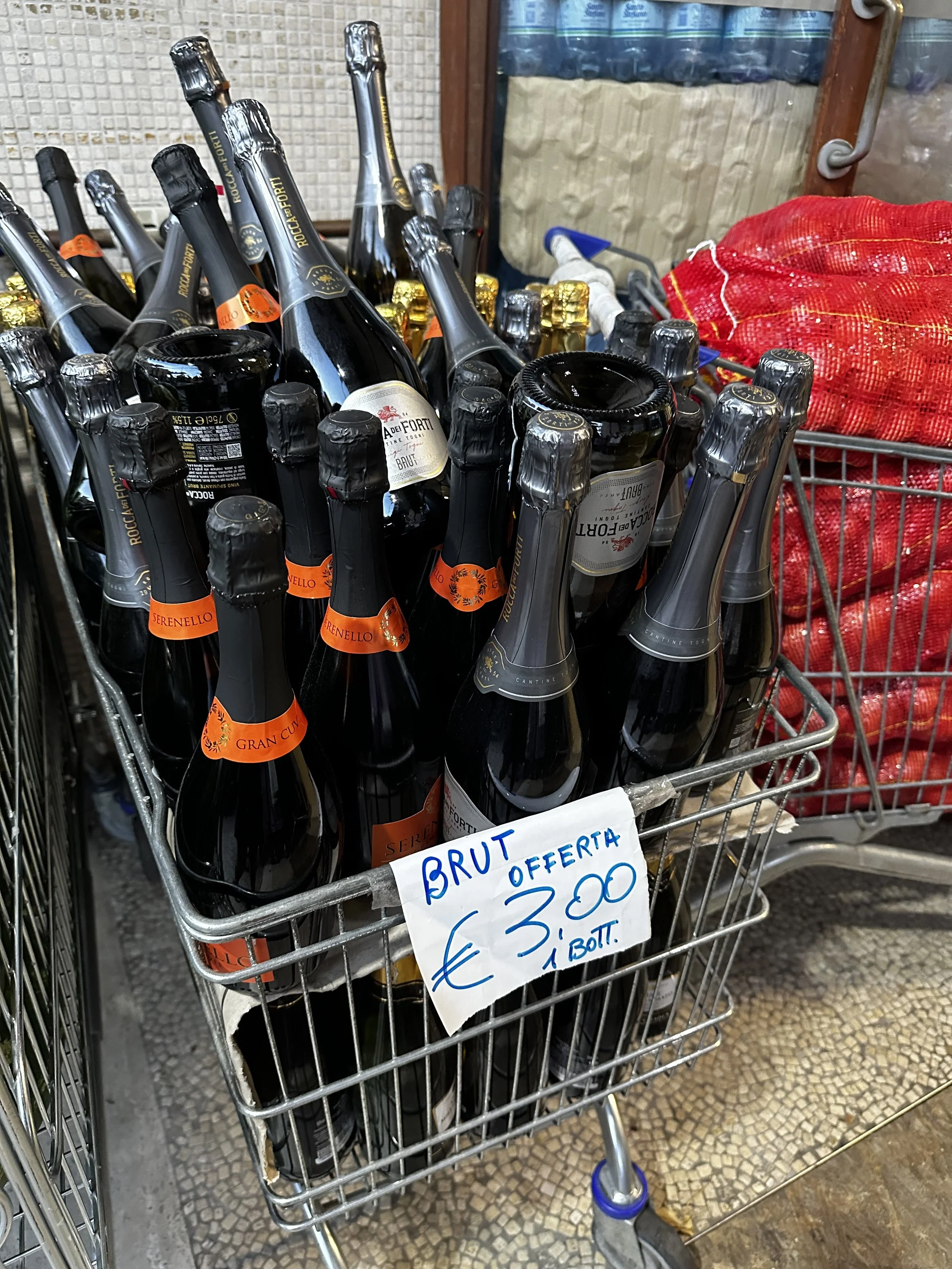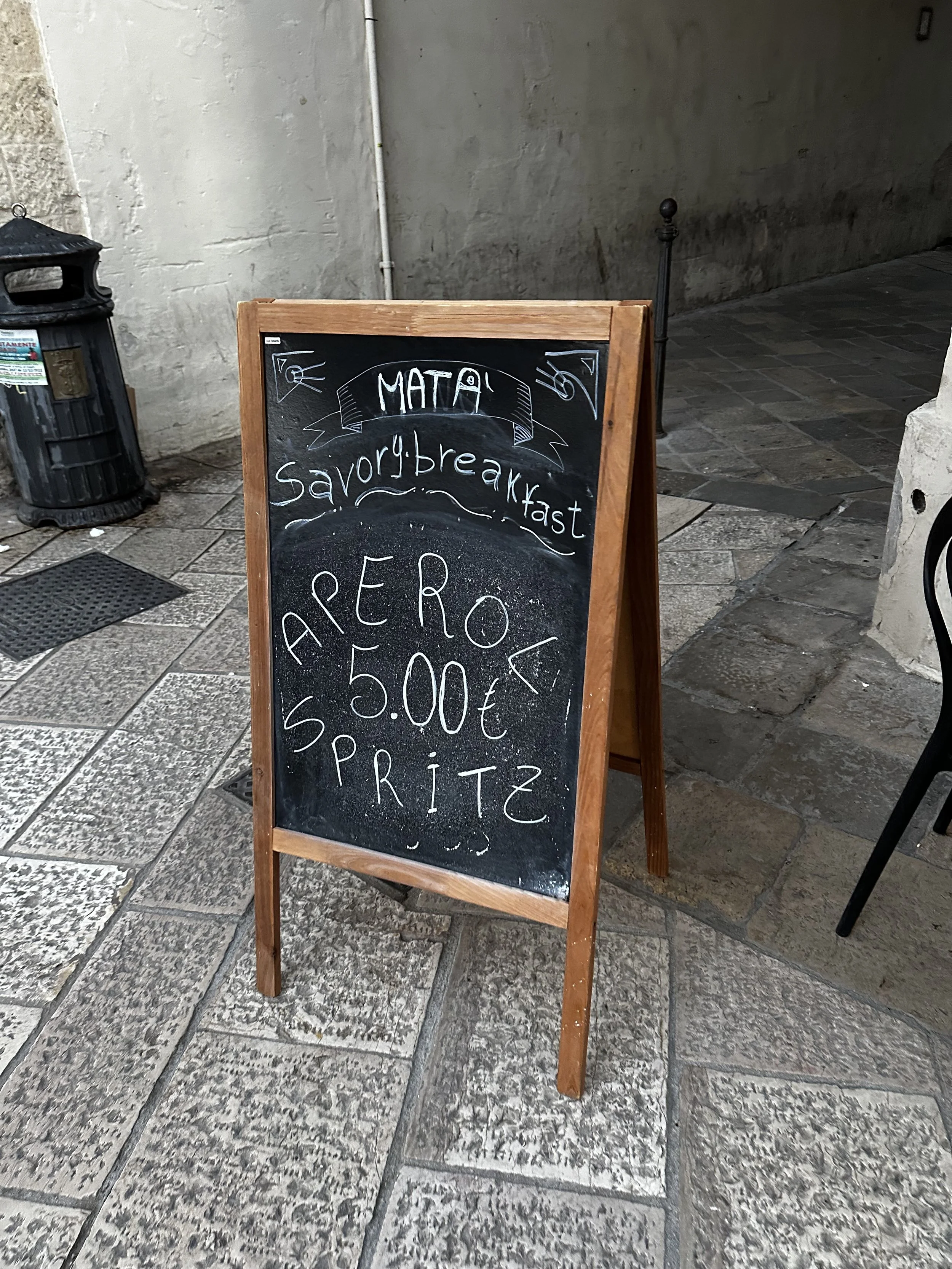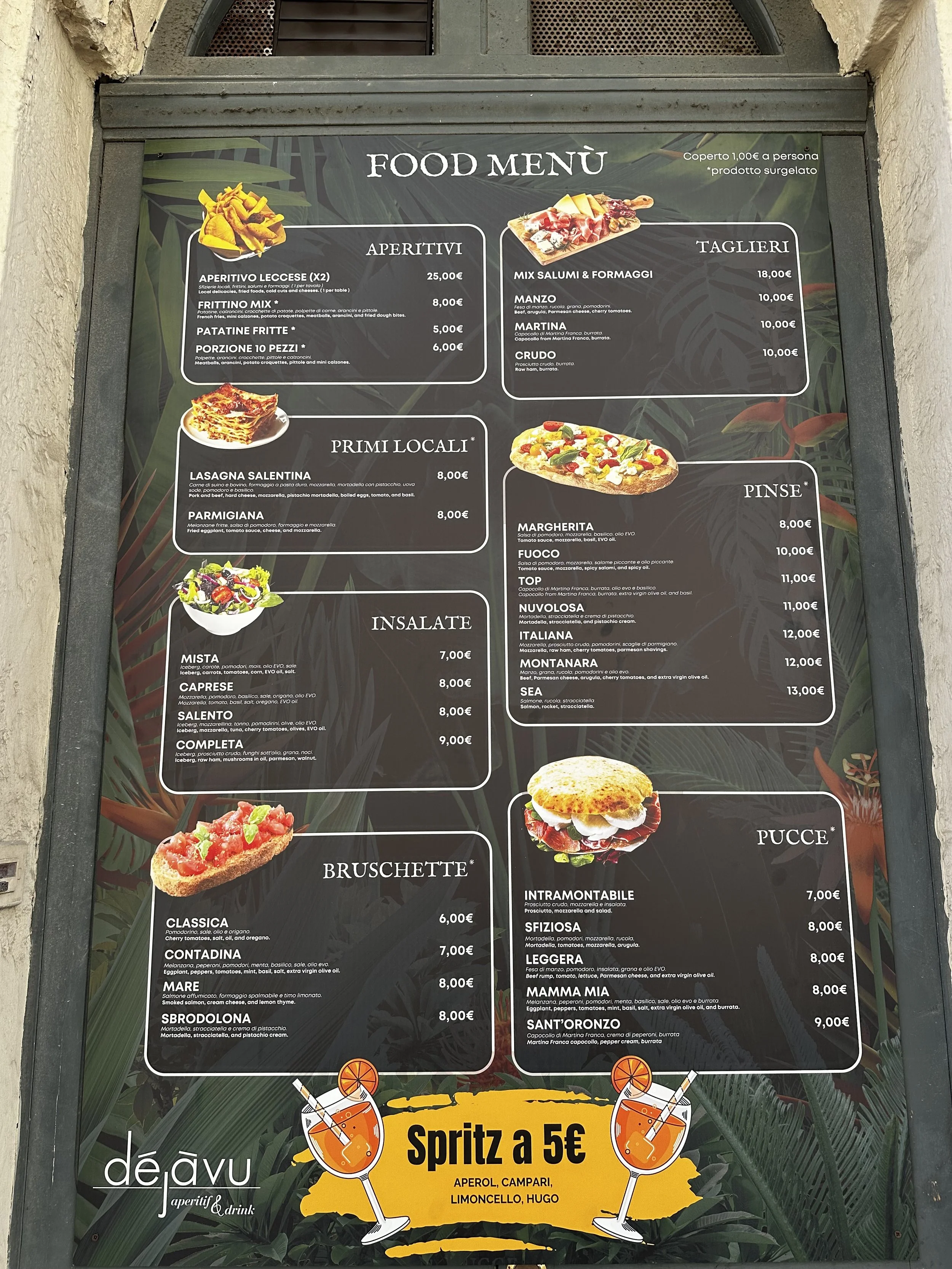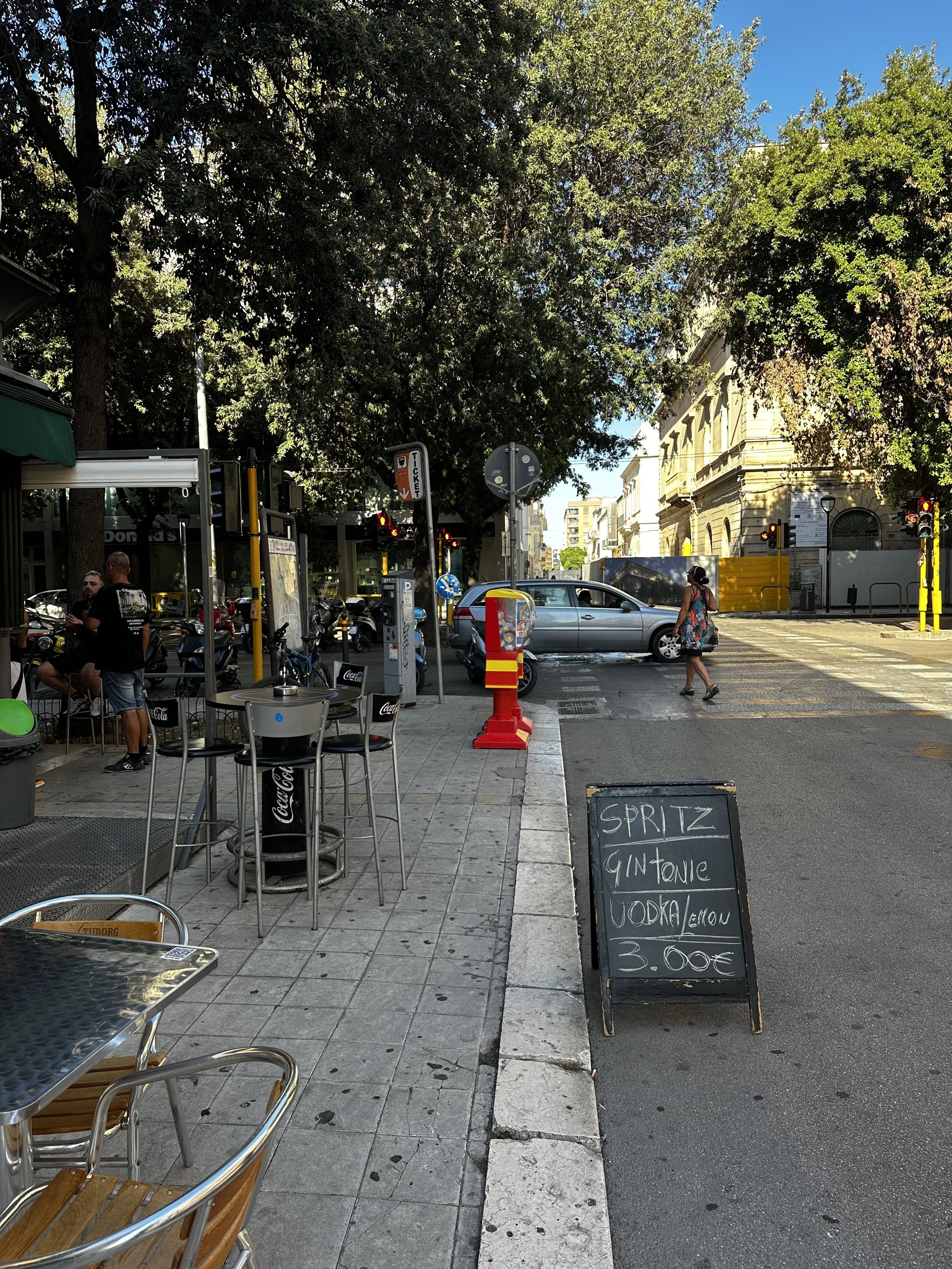Puglia Part II: Ostuni & Lecce
Whitewashed Dreams & Baroque Gold: Meandering Through Ostuni & Lecce
There’s something cinematic about Puglia. Maybe it’s the way light hits olive trees in the late afternoon, or the slow swirl of an espresso in a quiet piazza (I never drink coffee after morning but I have it every afternoon here). On this stretch of my southern Italy meander, we spent time in Ostuni, the famed “White City,” and Lecce, Puglia’s shimmering Baroque gem.
Two very different vibes—one carved from chalky stone and kissed by salt air; the other gilded, ornate, and pulsing with cultural energy. Both deeply Pugliese in their own right.
A few price points for reference - exchange rate was ~ $1 USD = €0.85
Rental Car - we already had our car (see previous Puglia post)
Parking - Ostuni - lots of options around Centre Storico, private lots €6 cash, public will take credit; Lecce - Parkejoo €12 for 24h, no parking in Centre Storico
Accommodations - Masseria Il Frantoio / Signuria Dimora B&B €109 in Lecce
Ostuni: The White City on the Hill
You see Ostuni before you arrive. The whitewashed buildings spill across the hill like a mirage, rising from a sea of olive groves. It’s the kind of place that makes you involuntarily whisper wow.
Wandering its centro storico feels a bit like stepping into a whitewashed version of Alice in Wonderland—narrow, twisting alleyways loop through arches and winding staircases, lined with potted succulents and glimpses of the Adriatic sparkling in the distance. Everything is white, not just for aesthetic reasons but tradition—it was a way to keep homes cool and sanitized, especially during plague years. Perched above the plain, the city can get hot (like when we were there).
Ostuni feels special—it still has the charm of a small town that hasn’t quite gone viral (at least not in the U.S. yet). Even during what should have been peak tourist hours, the streets remained surprisingly peaceful. Maybe it was the early heat keeping people indoors. Either way, it’s just one more reason Puglia still feels like a bit of a secret.
Locals told us Ostuni truly comes alive at night, but since we were staying nearby at a masseria (see my earlier post), we opted to enjoy the stillness of the countryside—watching the whitewashed town glow softly in the distance as the sun dipped below the horizon.
One of my favorite local philosophies? You don’t really plan where to eat. When you’re hungry, you check out what’s nearby and trust the right place will present itself. It’s a wonderfully intuitive approach—and honestly, I get why Italians live this way.
That said, this works best in Ostuni’s old town. In the busier beach towns we visited during the trip, I’d definitely recommend making dinner reservations if you want to guarantee a table at a specific place and time, we learned that the hard way.
Don’t Miss in Ostuni:
Aperitivo at a nearly any restaurant - the city is perched high and in a circle, there is a view from 360 degrees - take your pick you can’t go wrong, follow your gut
The Cathedral of Ostuni with its delicate rose window
Popping into tucked-away artisan shops, especially for ceramics and woven goods
Gelato at Gelateria Artigianale Alegra - the owner was so friendly and insisted we try a few of his special flavors
Museum of Ostuni - some very old relics, gorgeous view from the top, and a special interpretation of men playing basketball at the Contemporary Art Museum next door
Wander the city in the morning then head to the beach in the afternoon (that is what we did, it’s only :15min away); you can always return in the evening for the nightlife
Lecce: The Underrated Gem of Southern Italy
All the art, architecture, and culinary magic you’d expect from Italy—but without the crowds or high price tag of its flashier cousin to the north (yes, I’m talking about Florence). Though honestly, comparing the two feels like doing Lecce a disservice. This city has a soul all its own. Grand yet grounded, Lecce sits in the heart of Puglia’s Salento region—strollable, cozy, and exactly the kind of place where you imagine buying one of those “Under €100K” homes on Instagram and living totally content and off the grid.
Have you ever imagined what it would be like to walk into a stranger’s home in Italy and cook in their kitchen using recipes from their family? Well, wonder no more—because we did exactly that. This time, with Piera in her home just outside Lecce, we learned to make good old-fashioned Southern Italian street food: panzerotti. This was my second experience with the Cesarine network, and it’s easily become one of my favorite ways to experience Italy.
Cesarine connects travelers with home cooks across the country for intimate, in-home cooking experiences that go far beyond your average class. You’re not just learning a dish—you’re stepping into someone’s daily life, hearing their stories, and tasting the region from the inside out. Each host is carefully chosen, making this one of the most authentic and personal ways to dive into Italian food culture. If you’re in or around Lecce, look up Piera!
So we filled our bellies with panzerotti, hugged our new friend Piera, then packed into our Opal Corsa. We made three wrong turns and finally headed the 8 minutes down the road into Lecce. I love small-town Italy.
History runs deep here. Lecce’s story began long before its famous Baroque beauty. Originally settled by the Messapians, it was later taken over by the Romans, who left behind an amphitheater that still commands attention in the heart of Piazza Sant’Oronzo.
The food is the heartbeat of Lecce—rustic, soulful, and always seasonal. Think handmade orecchiette, creamy burrata, sun-dried tomatoes, and generous drizzles of local olive oil. The bread is hearty—made with semolina wheat (more yellow than white), with a hard crust and delicate crumb. Meals stretch on for hours (if you read my Masseria post, you’ll get it), usually enjoyed outside under the Puglian sun or stars. The local primitivo (deep red) and rosé flows easily, and every table feels like a celebration of the simple, good things. Ah, there it is again: far niente.
Other recommended restaurants:
Trattoria le Zie - traditional Salento meat and pasta that feels more like your aunt’s living room than a restaurant
Il Vico del Gusto - blends traditional Puglian flavors (known for their fish), offering beautifully plated dishes in a cozy, tucked-away setting that feels both refined and welcoming
Tabisca - beautiful selection of antipasti and wines as well as traditional southern Italian meats and sandwiches
Volo - upscale traditional Salento flavors with attentive service
Michele/Ciro - if you’re craving pizza you can’t go wrong with either of these spots
Even the churches feel different here. If you’re not usually one for church visits, Lecce might just change your mind. Its signature “Lecce Baroque” style transforms the city into an open-air gallery, with buildings carved from golden limestone that seem to glow at golden hour. I always make time for churches when I travel (candidly, it’s the only time I go to churches)—I’m always so curious about how religion and ritual shaped daily life.
From the 15th to 17th centuries, Lecce was the center of religious and artistic life in Salento. The standout churches—like Basilica di Santa Croce, Chiesa di Santa Chiara, San Matteo, Antico Seminario, and the stunning Duomo with its panoramic bell tower—are architectural wonders. The frescoes, all painted by local artists (many during the same period as the masters in Rome, Florence, and Venice), are every bit as spectacular, even if less famous than those by Raphael or Michelangelo.
Pro tip: A €21 pass gets you into these five churches plus the bell tower. The system can be a bit confusing, so don’t let attendants talk you into buying multiple tickets—just show your pass. Inside, you’ll find frescoes, carved altars, and details that rival anything in Italy’s more famous cities. From the bell tower, you’ll spot tiled rooftops of many other stunning churches, too.
For accommodations, staying in the Centro Storico is the move. It’s walkable, just lively enough, and filled with charming B&Bs and boutique guesthouses. Lecce is easiest to reach by car if you’re road-tripping through Puglia (Parkejoo is a convenient underground lot just outside the old town). Trains do run here, but service can be a bit inconsistent—so plan ahead if you're relying on public transport.
And while Lecce shines in so many ways, not every attraction hits the mark. Castello Carlo V—the imposing fortress at the city’s center—felt like a bit of a letdown. Though impressive from the outside, much of it is closed to visitors. A guided tour and app-led walk took us through just a handful of restored rooms, with most of the expansive grounds off-limits. For such a grand structure, it felt like a missed opportunity.
What didn’t disappoint? The affordability. Even in the Centro Storico, prices aren’t bad. But just a few blocks outside the center? €3 Aperol Spritzes. Enough said.
-m
